Medium Writing
Medium Writing - Part 1



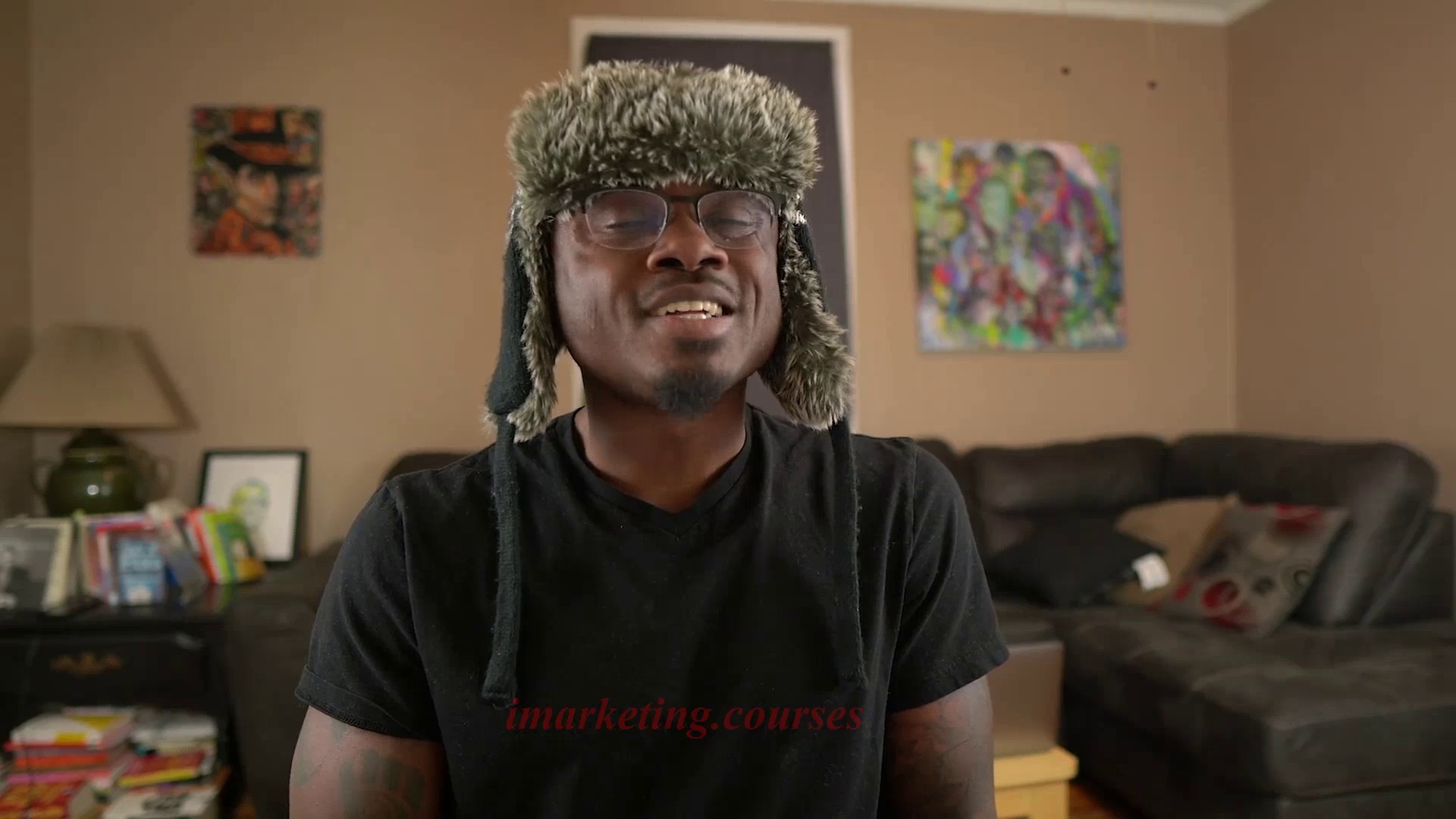






The narrator says when writing on Medium, you should focus on learning and improving your writing skills rather than making money. This mindset shift is key for long-term success. In the beginning, you likely won't make much money per hour invested. However, consistently writing high-quality content at volume will pay off down the road. Remove any sense of entitlement and be patient. Settle in for the long haul to build a sustainable writing career.
.Medium Writing - Part 2










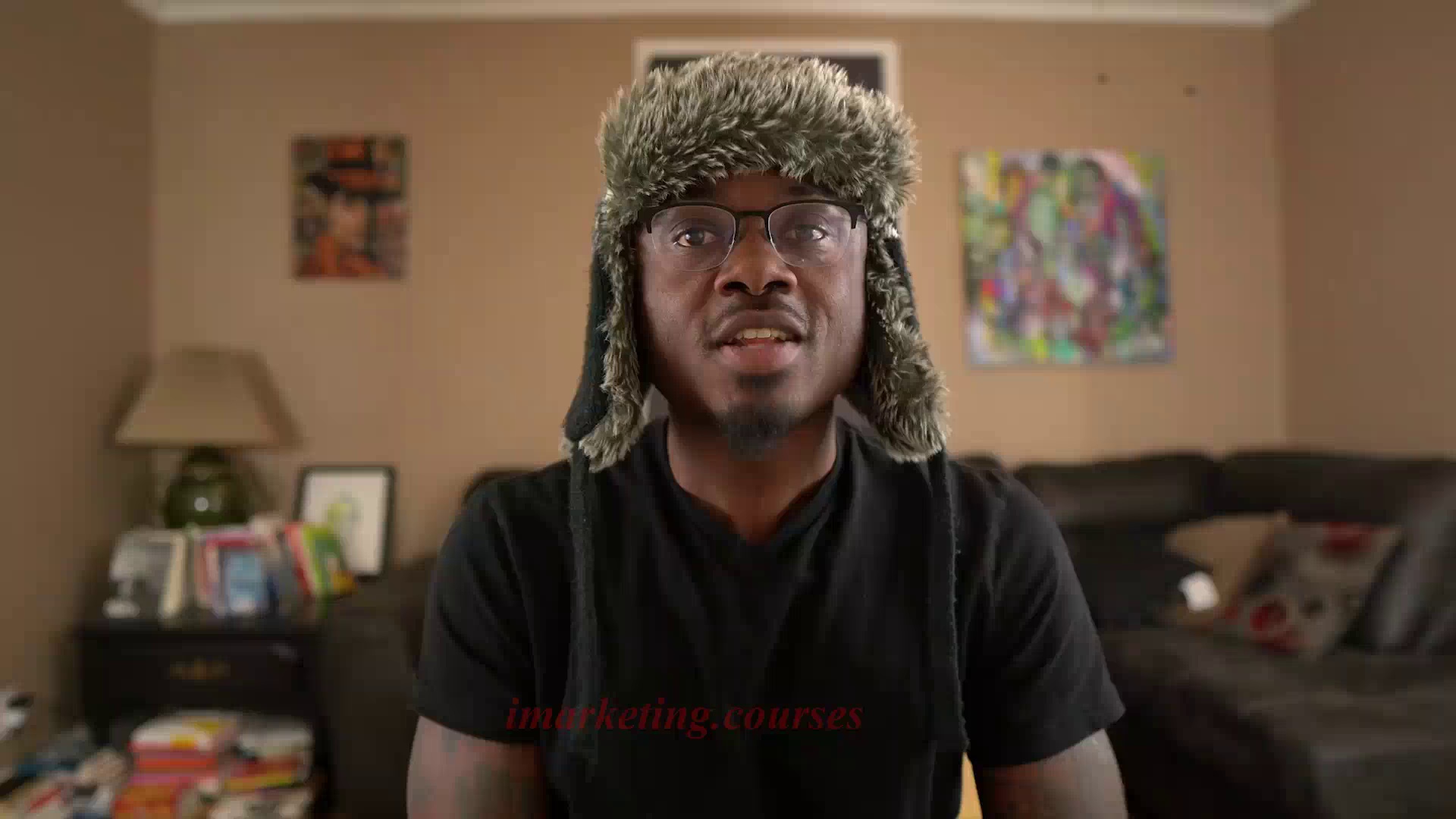
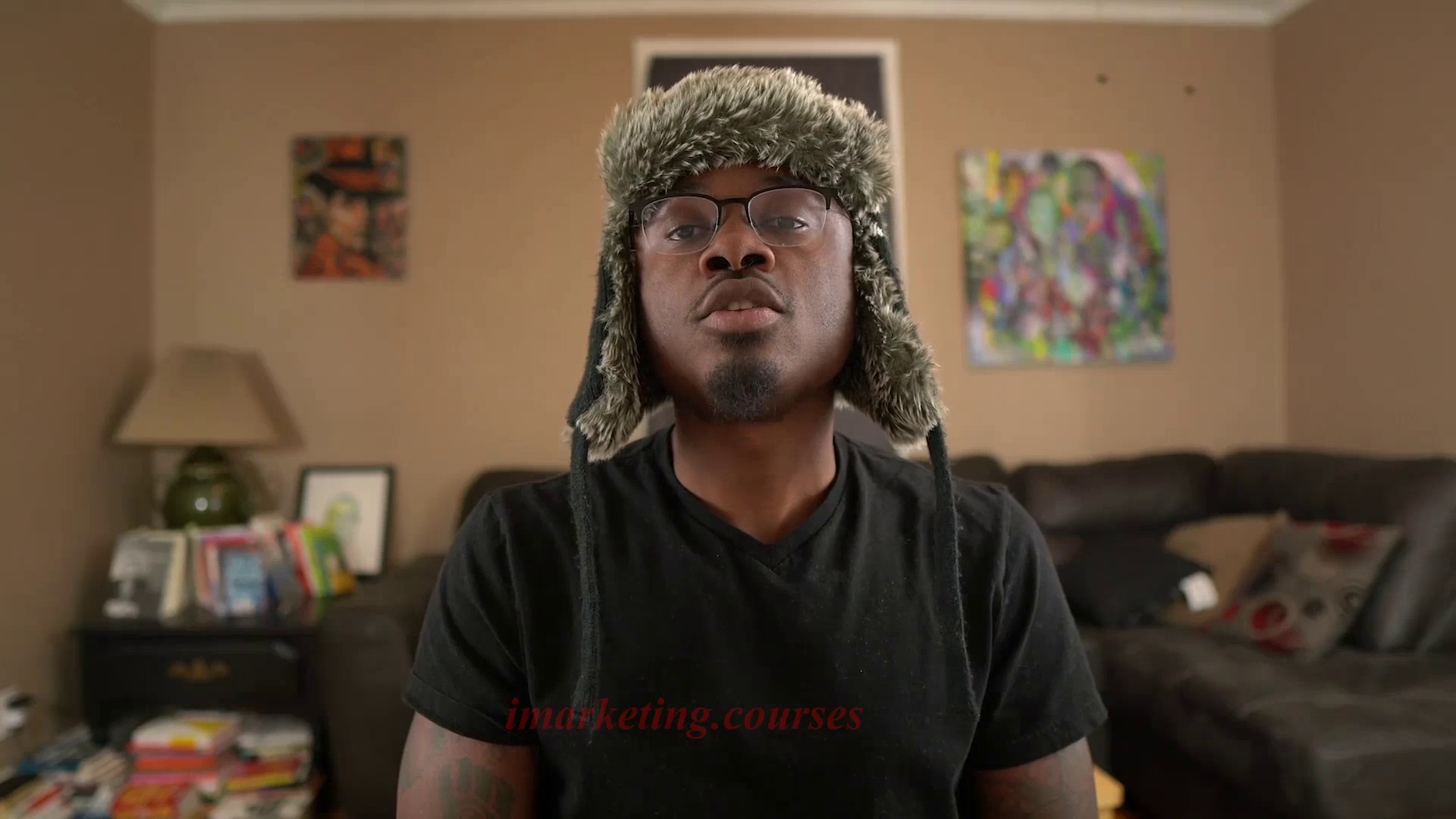
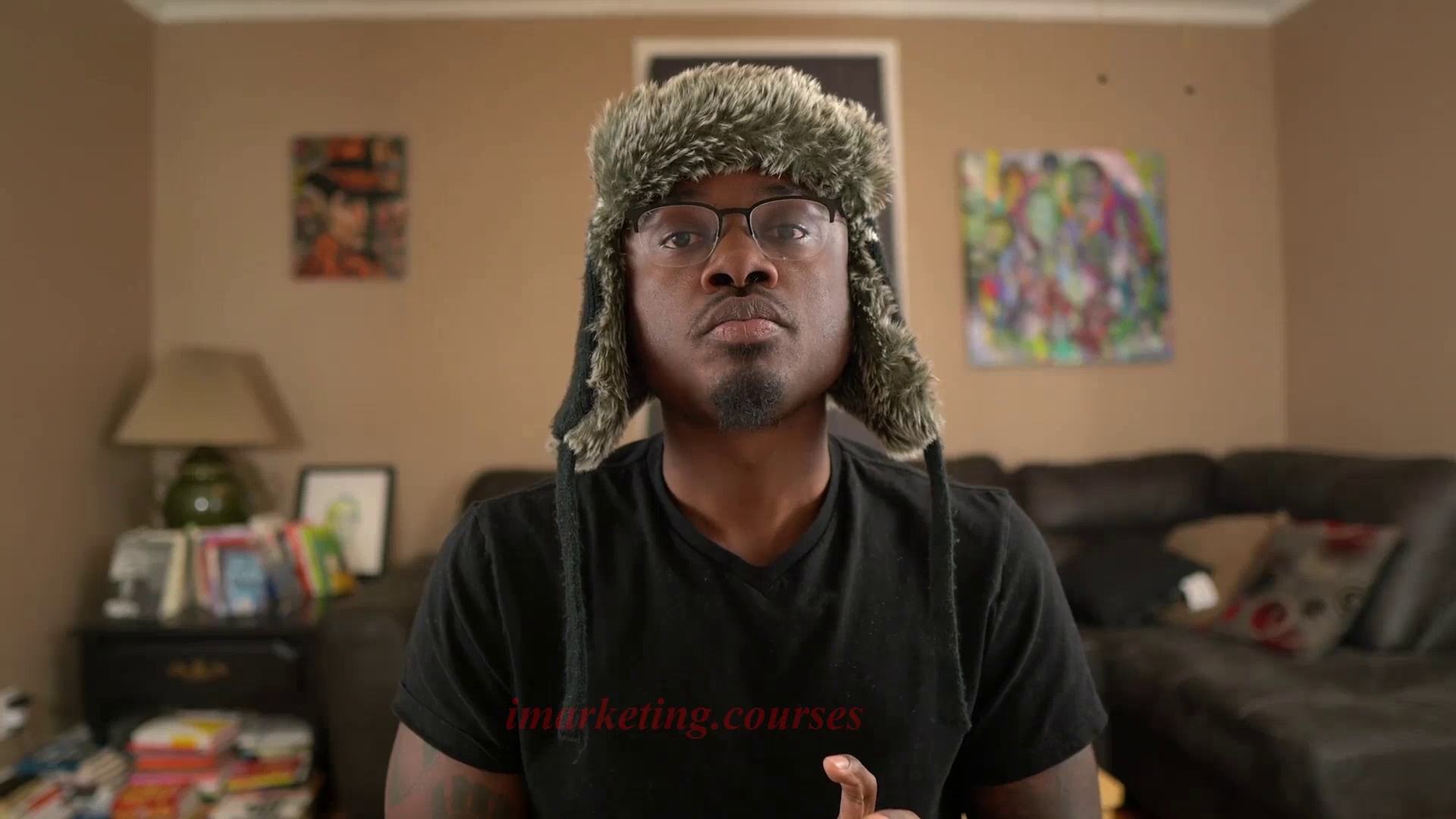

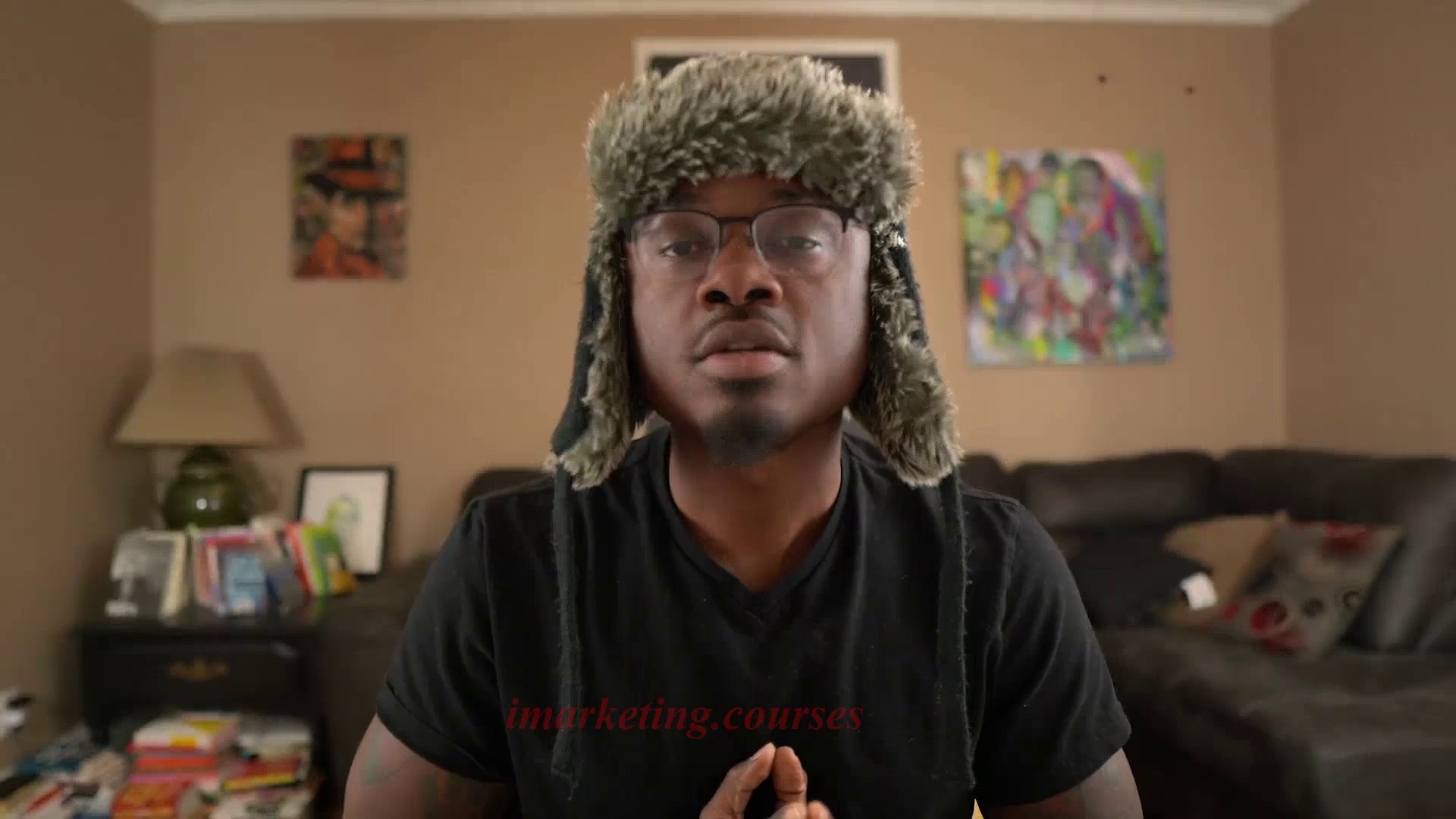
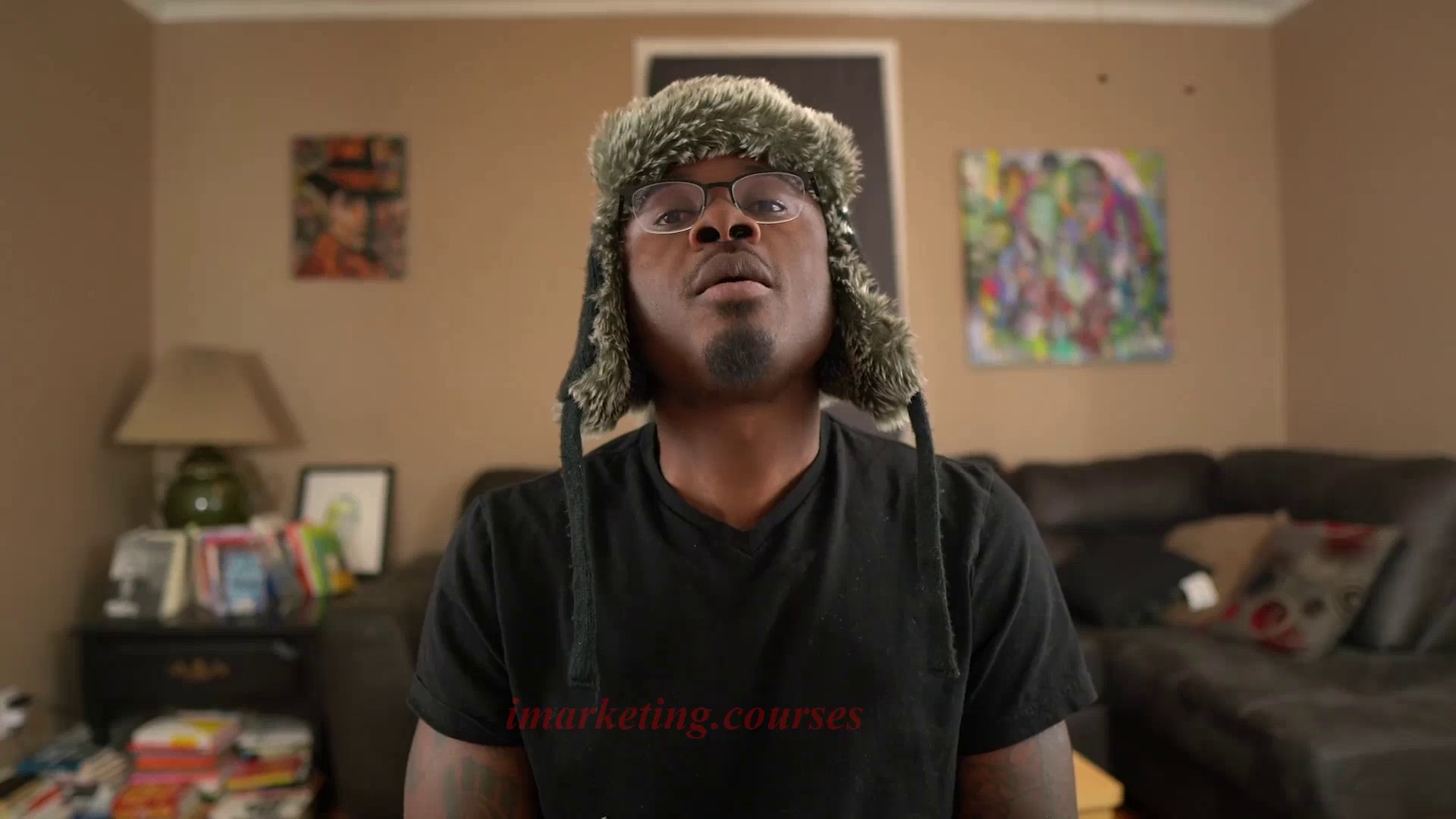
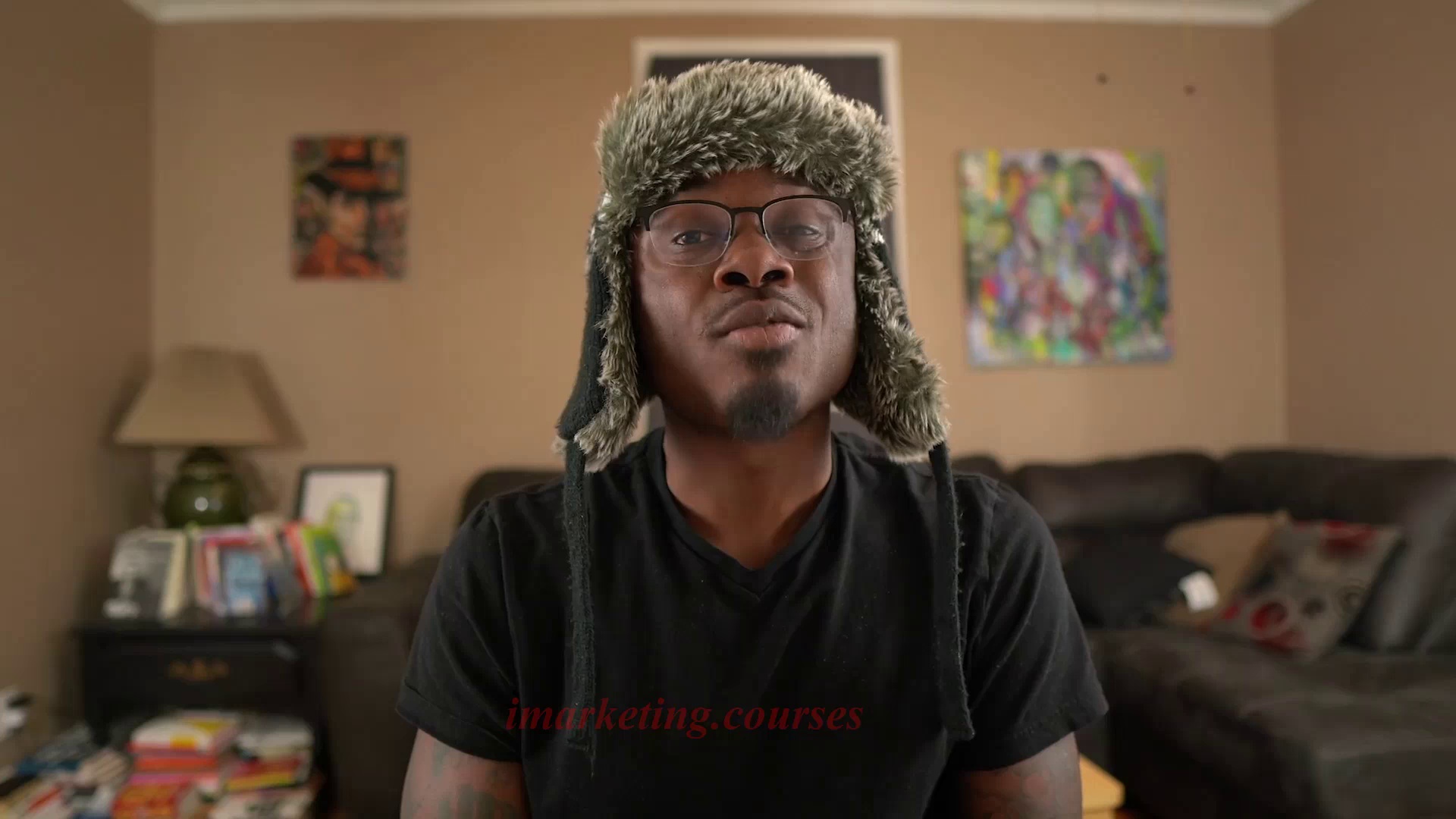
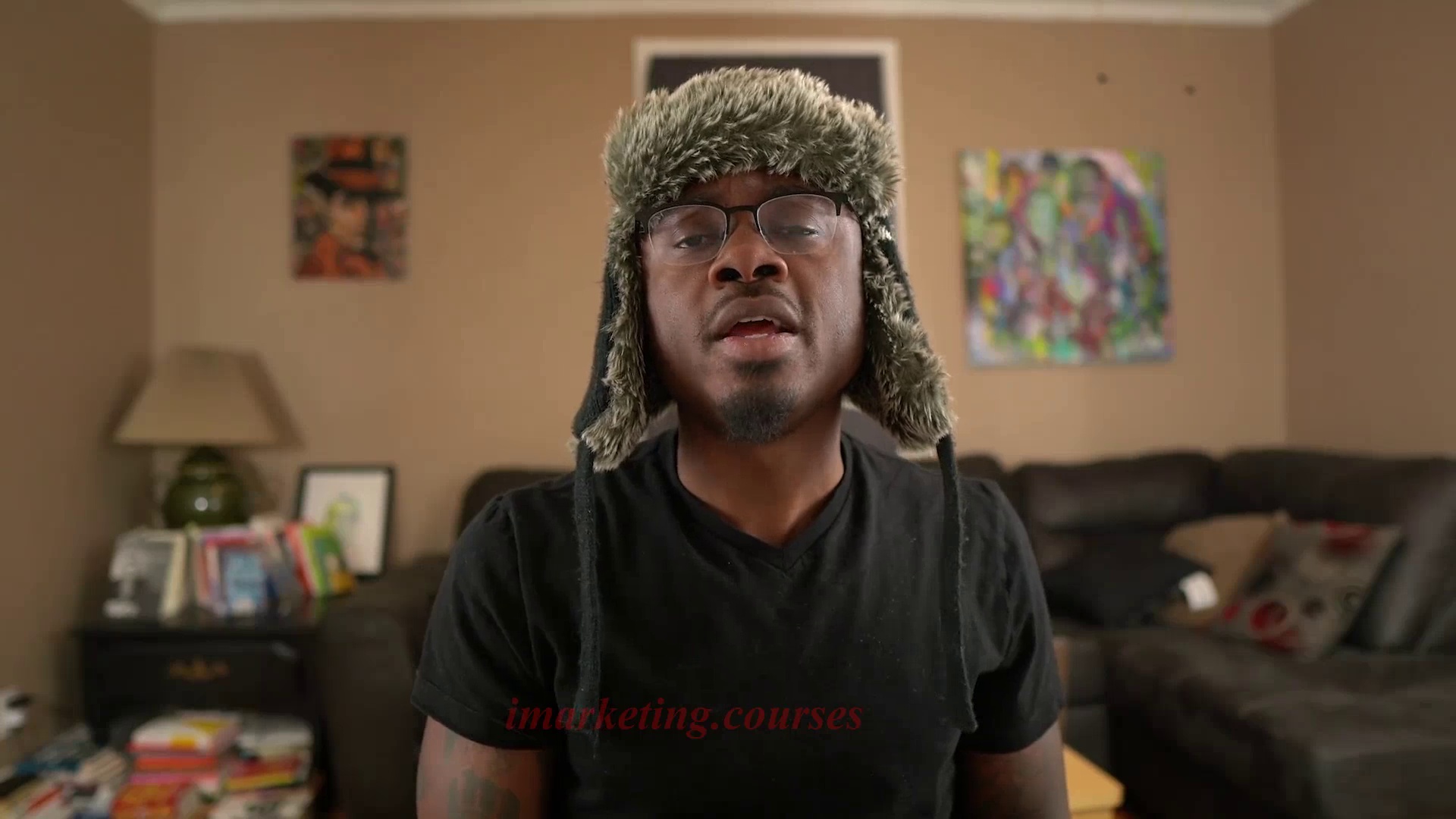
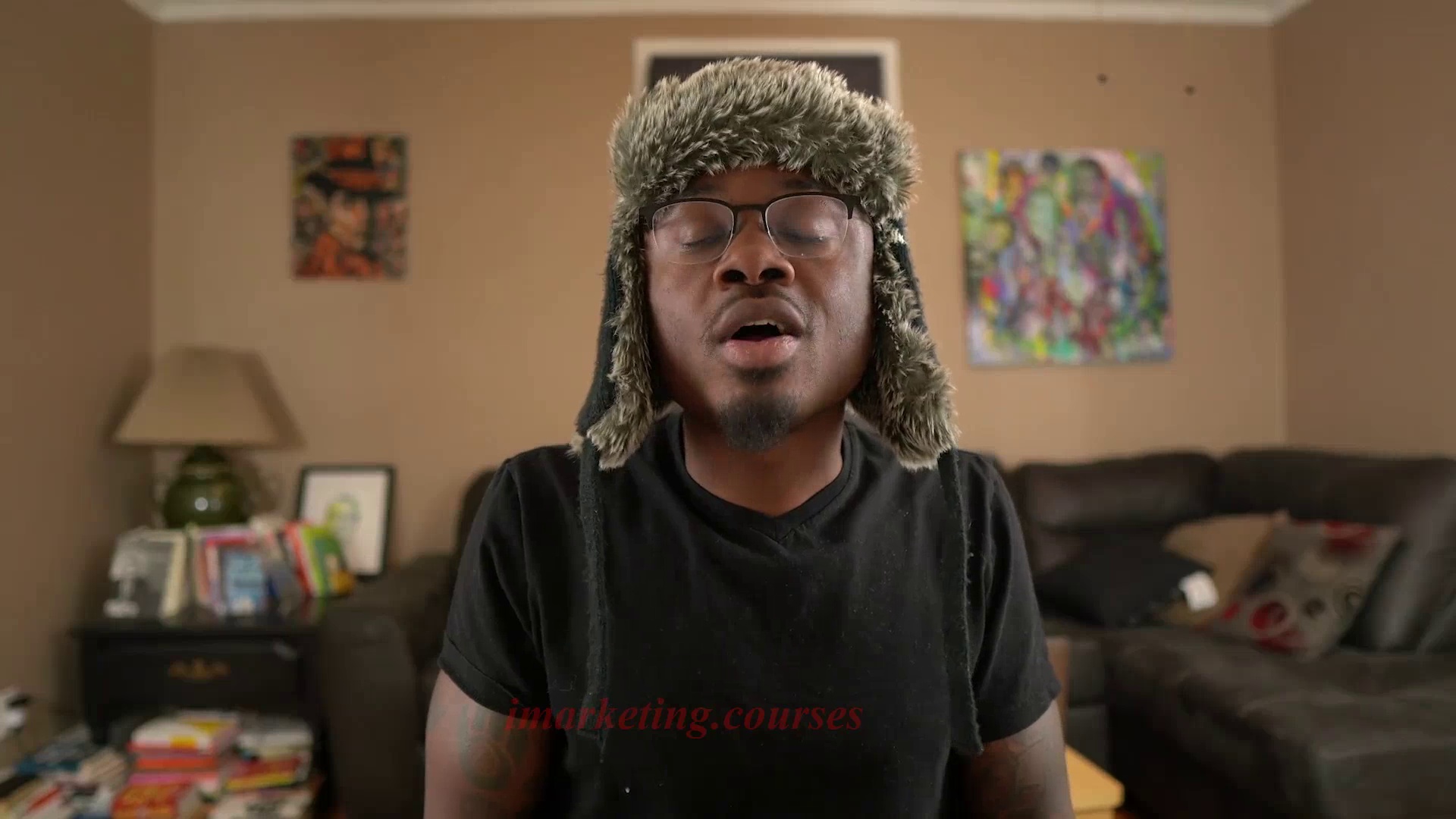
The Pareto principle states that 20% of your effort produces 80% of your results. This applies to writing careers - the initial 20% of effort lays the foundation for future success.
In the first 6-12 months, writers are beginners and articles are not very good. Using writing to learn and get feedback, not to make money. This is the hardest part as a newbie. Most people quit before reaching the traction point, when writing becomes consistent enough to consider a career.
After persisting for 6-12 months without quitting, writers can hit an exponential growth curve. Small growth leads to rapid acceleration later. 20% of articles may drive 80% of views. Top articles can pay extremely well compared to average articles.
Putting in consistent work over time leads to greater payoff for the same effort. The narrator earns far more per hour now compared to when starting out.
Need an exponential mindset focused on long-term growth rather than short-term linear gains. Persist through the hard early period to reach the traction point and set the foundation for future success.
.Medium Writing - Part 3



























Quantity leads to quality when it comes to writing. Aspiring writers often don't write enough. To be successful on Medium, you need to play the volume game and write prolifically.
Aim to publish 1-2 articles per week when starting out. Being prolific will make you a better writer faster. Consistency is key - sporadic writing causes you to lose skills.
Don't wait until you're perfect to start publishing. The narrator gives the example of a writer who had 16 not-so-great books before writing a bestselling 17th book. Quantity leads to quality.
Most of the success comes from the initial bulk of work. This ties into the Pareto principle where a small number of articles will do the heavy lifting later on.
Initially, write for free for the practice - don't focus on money. The narrator wrote for free for 3 years before making good money.
The more you write, the more content assets you build that can be reused, repurposed, and leveraged in books etc. So keep producing content.
.Medium Writing - Part 4



























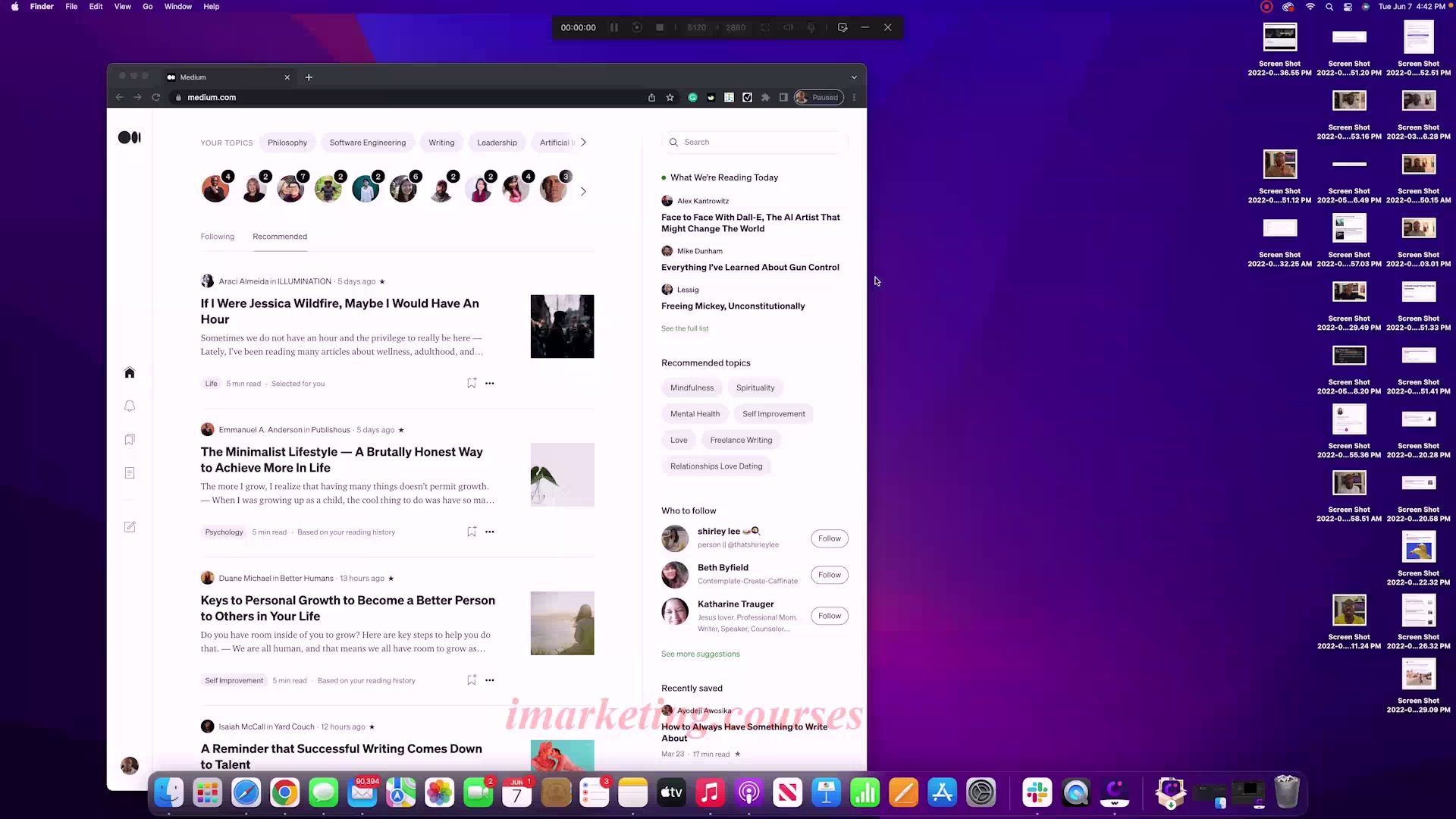
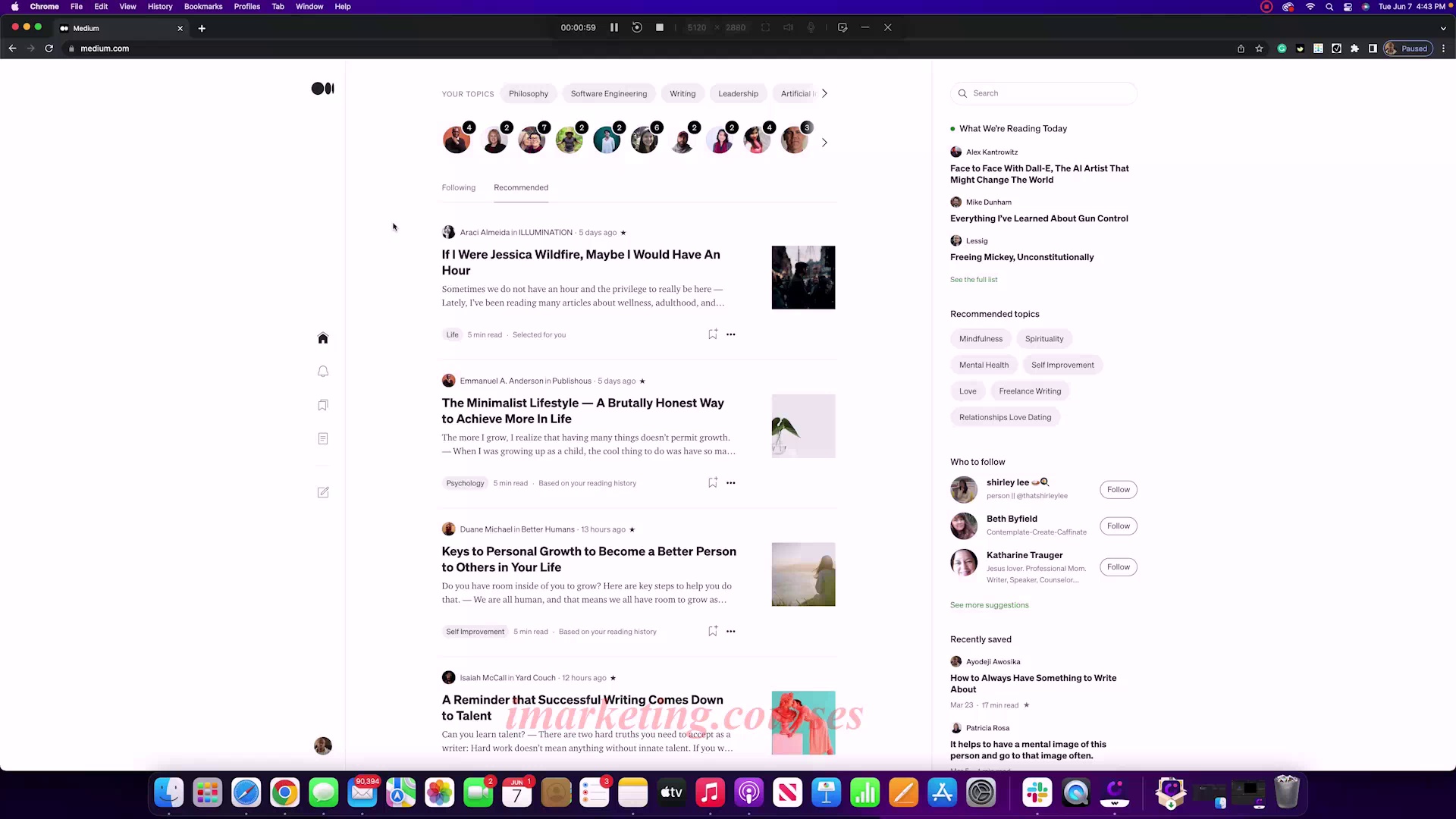
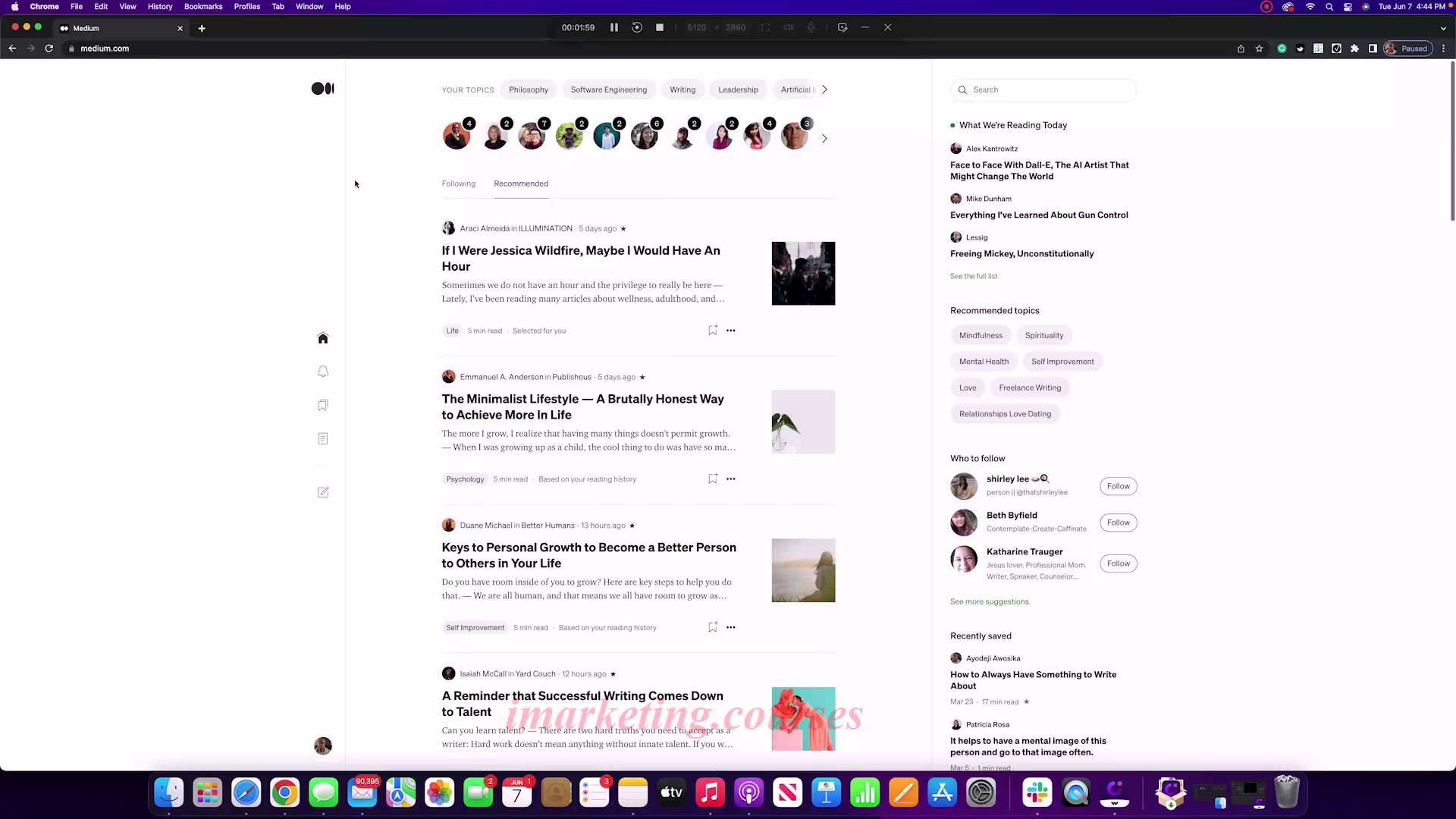
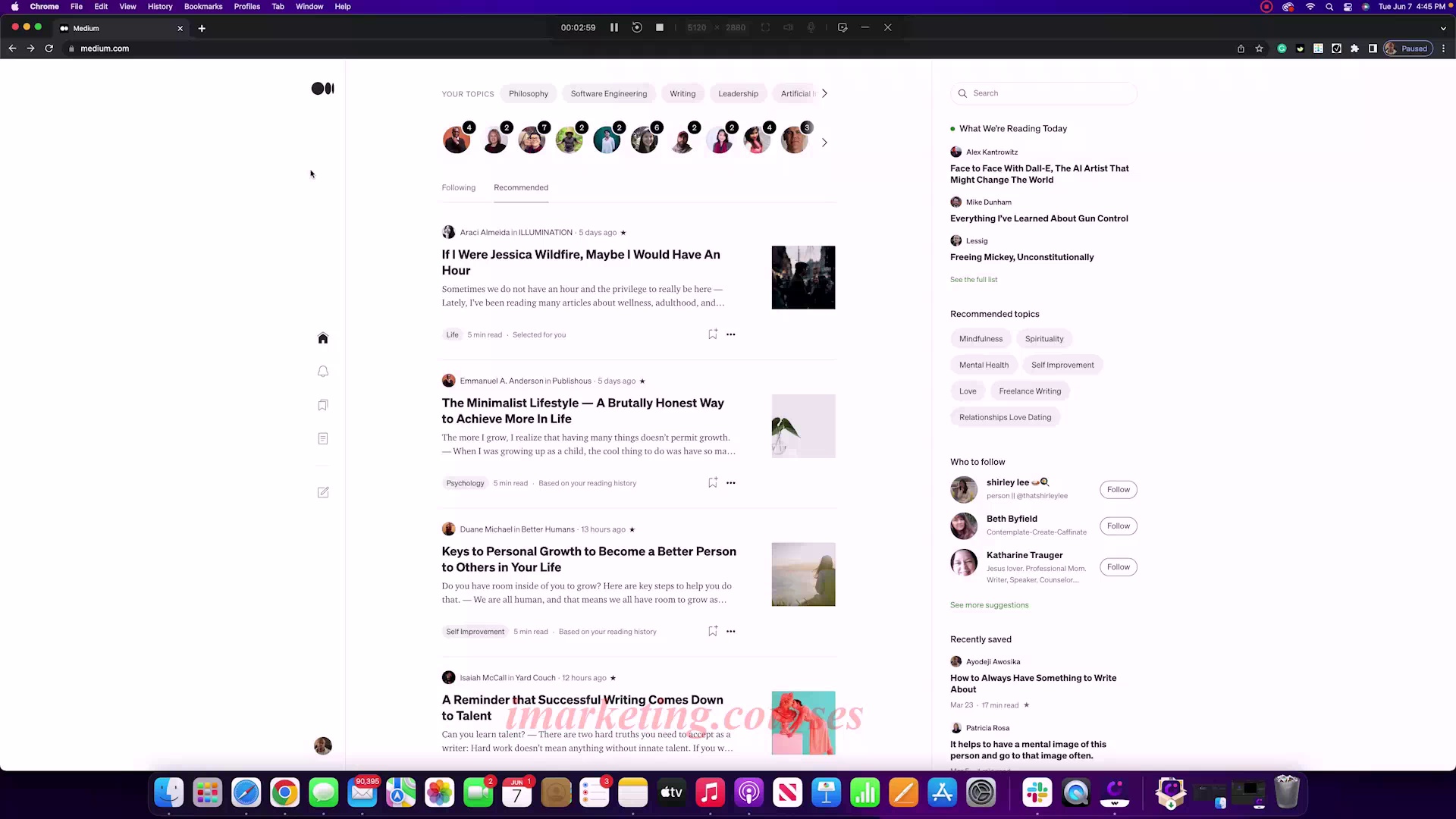
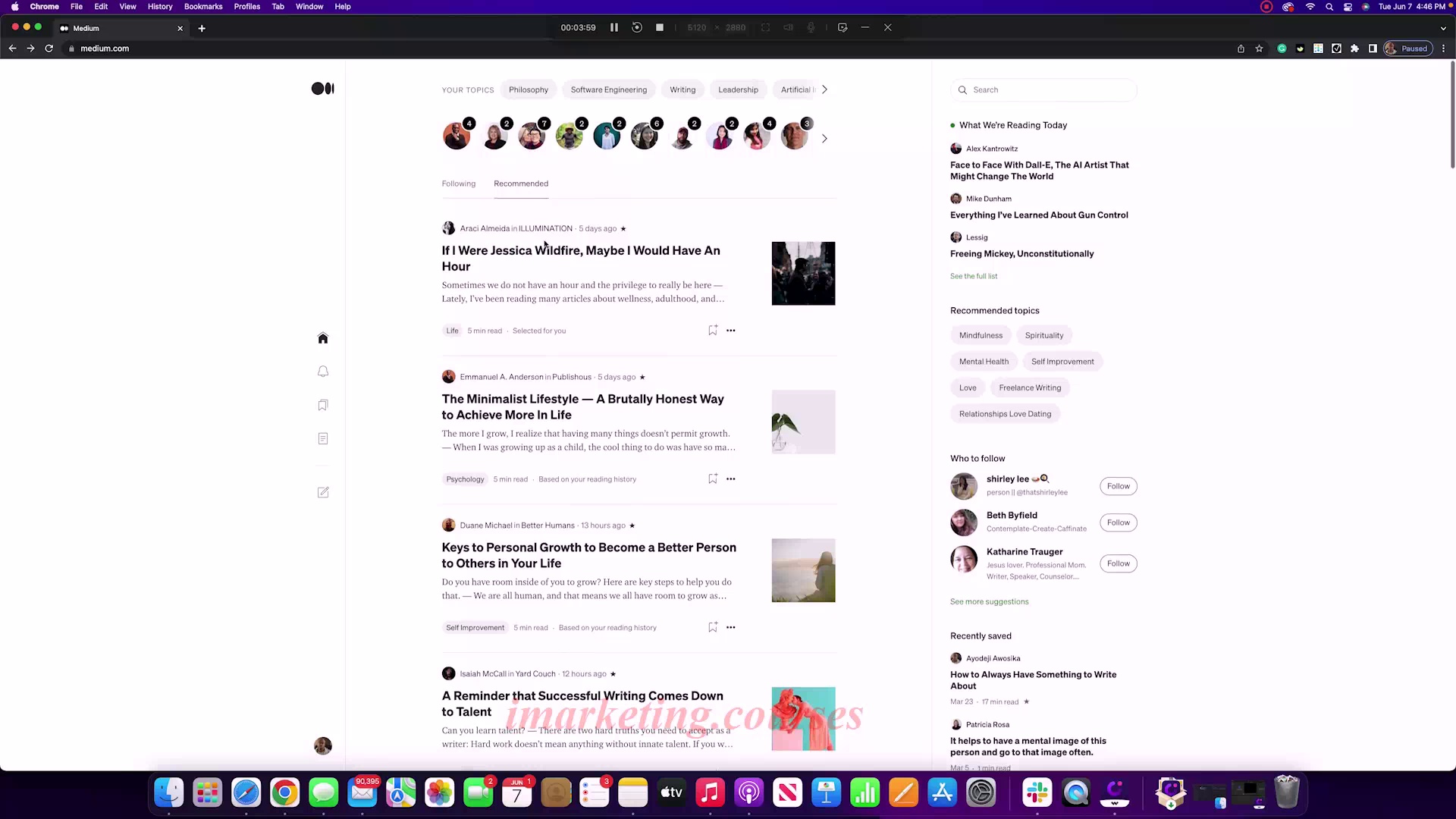
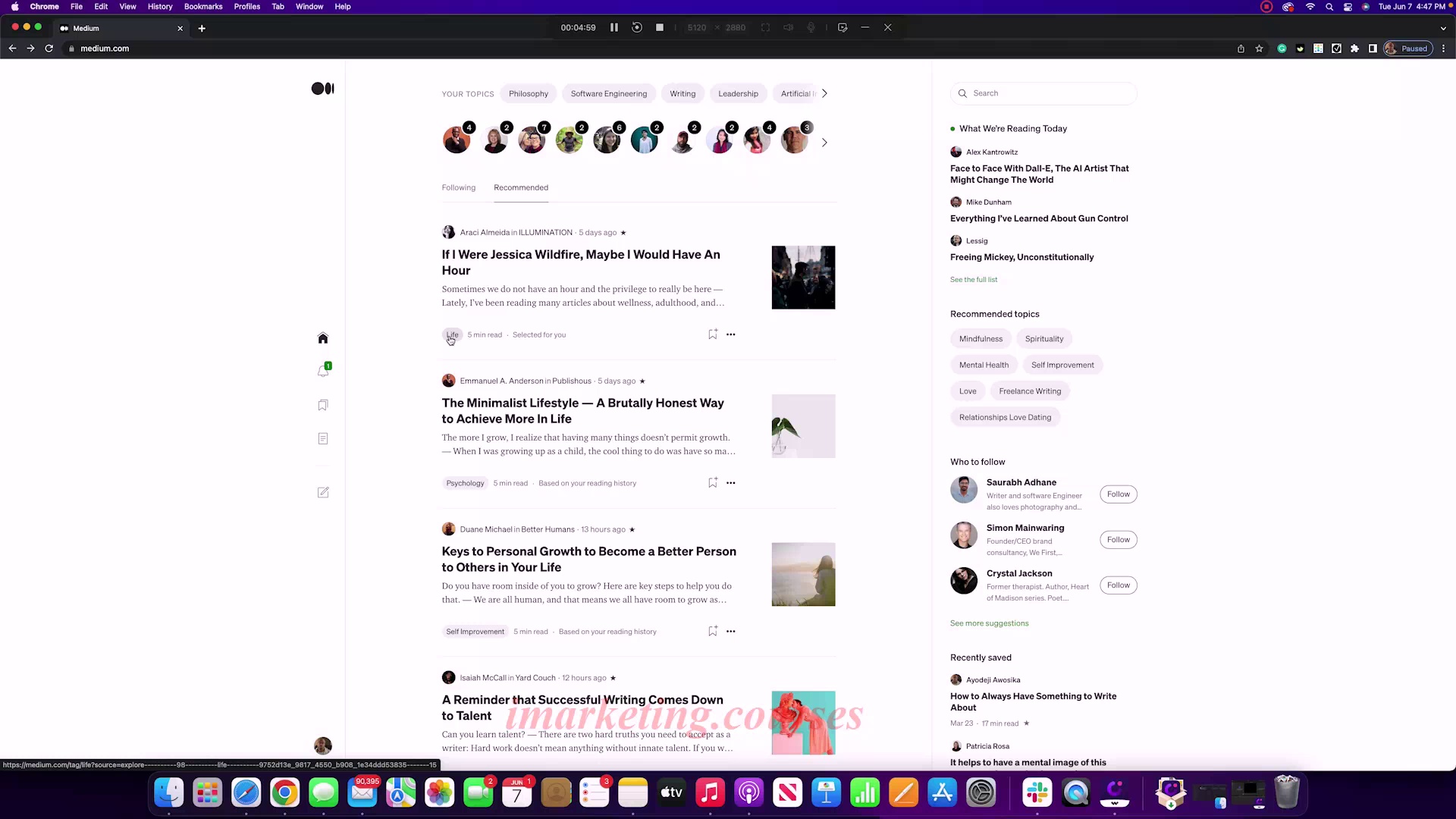
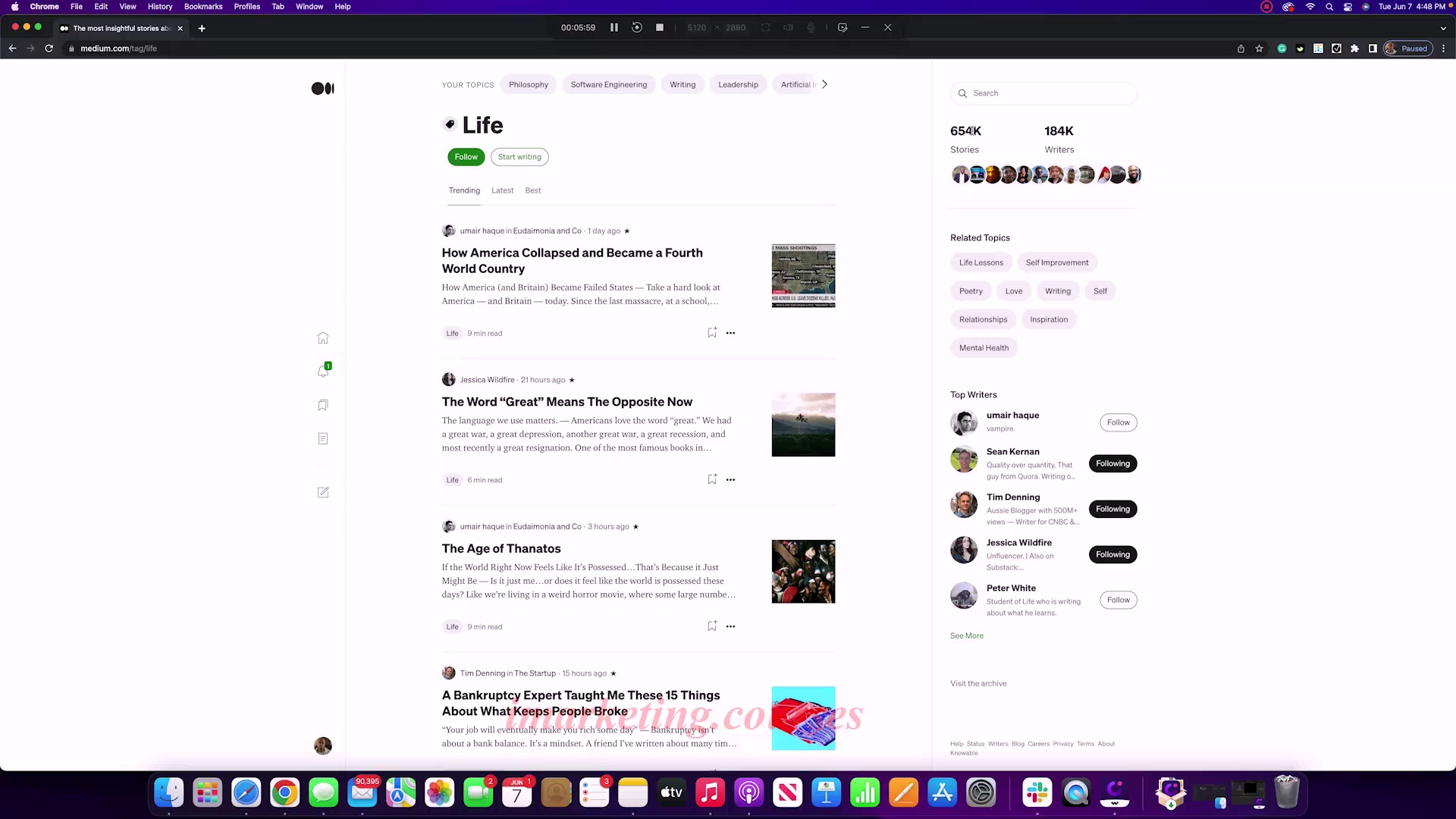
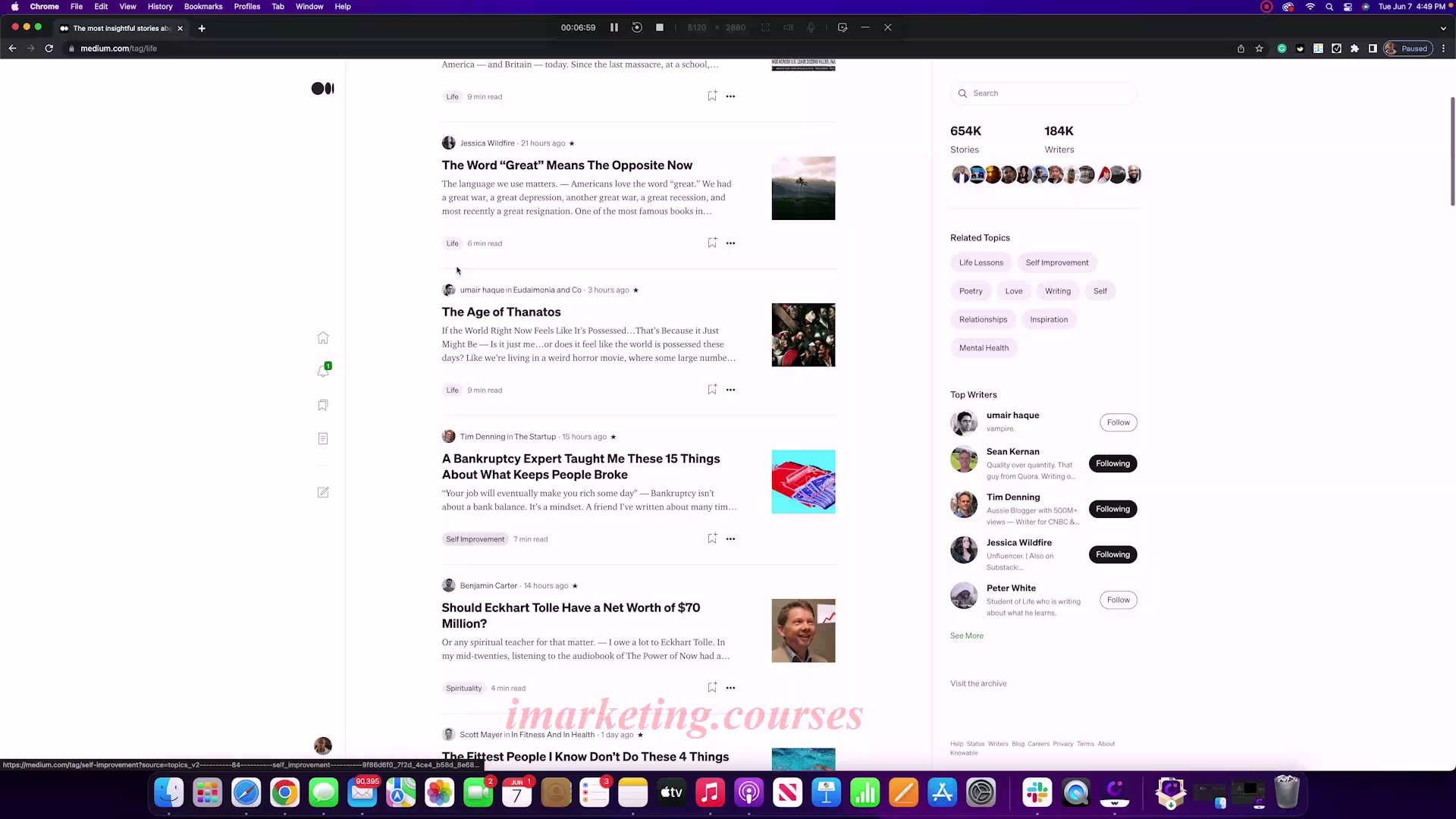
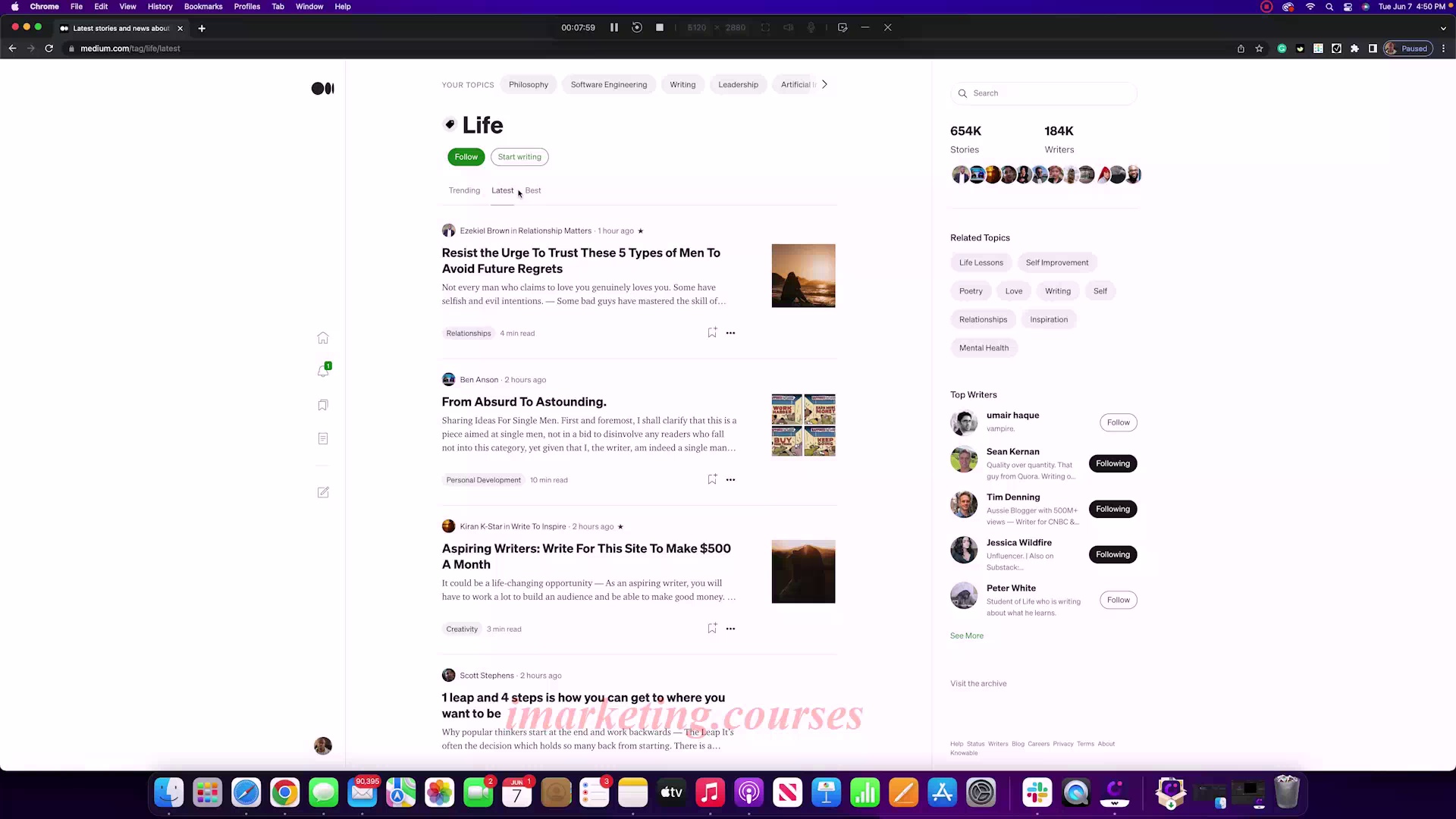
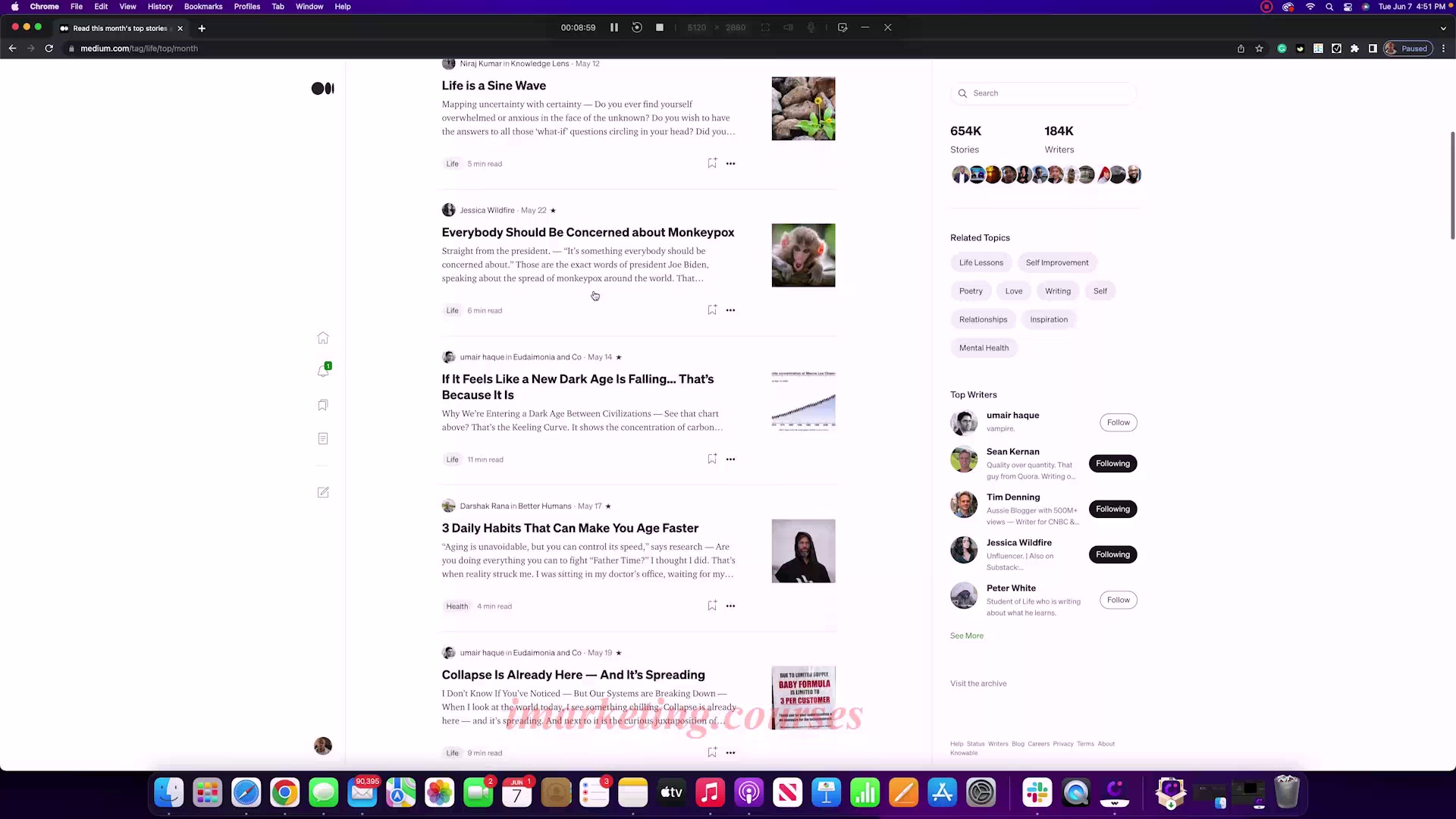
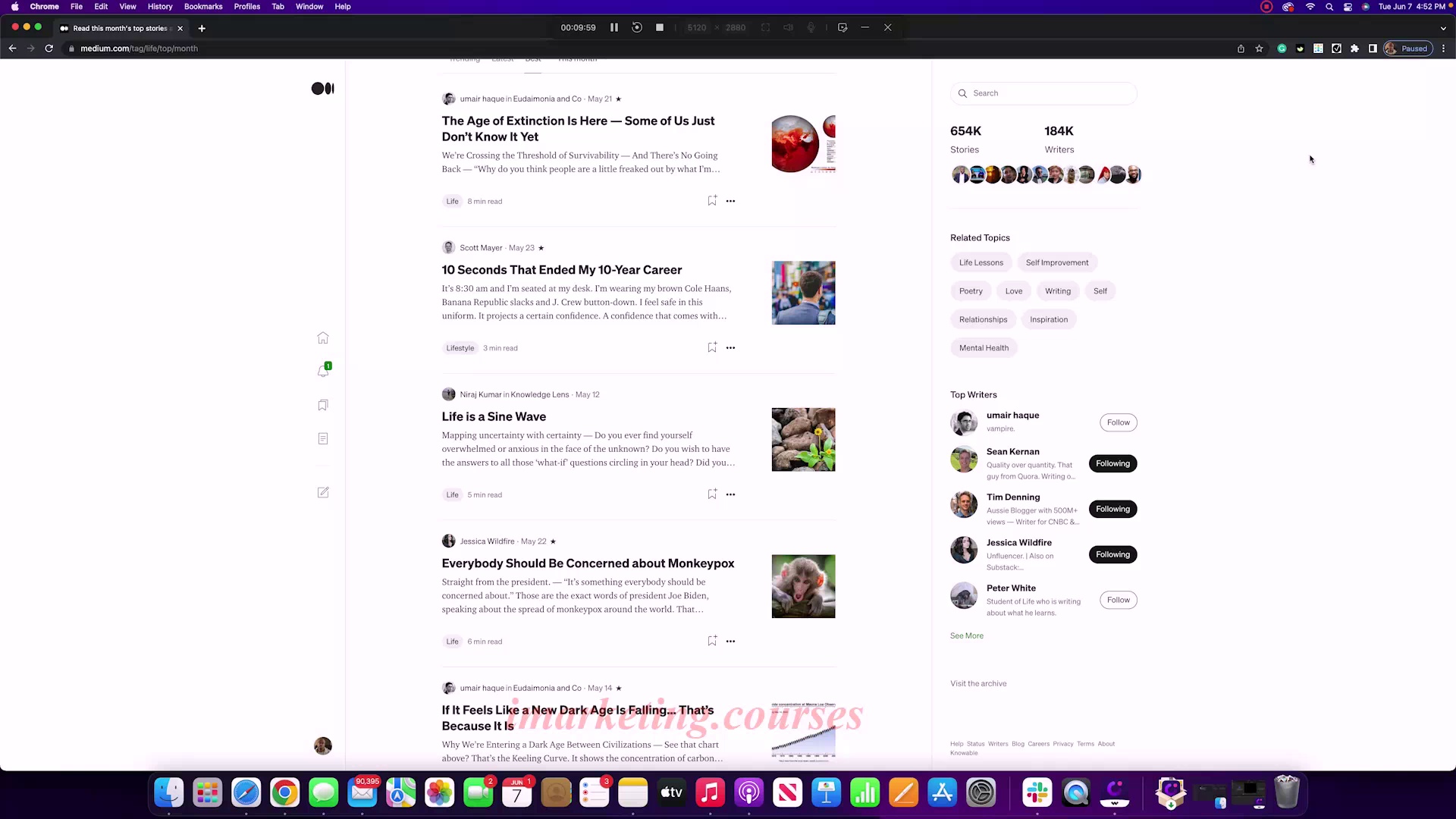
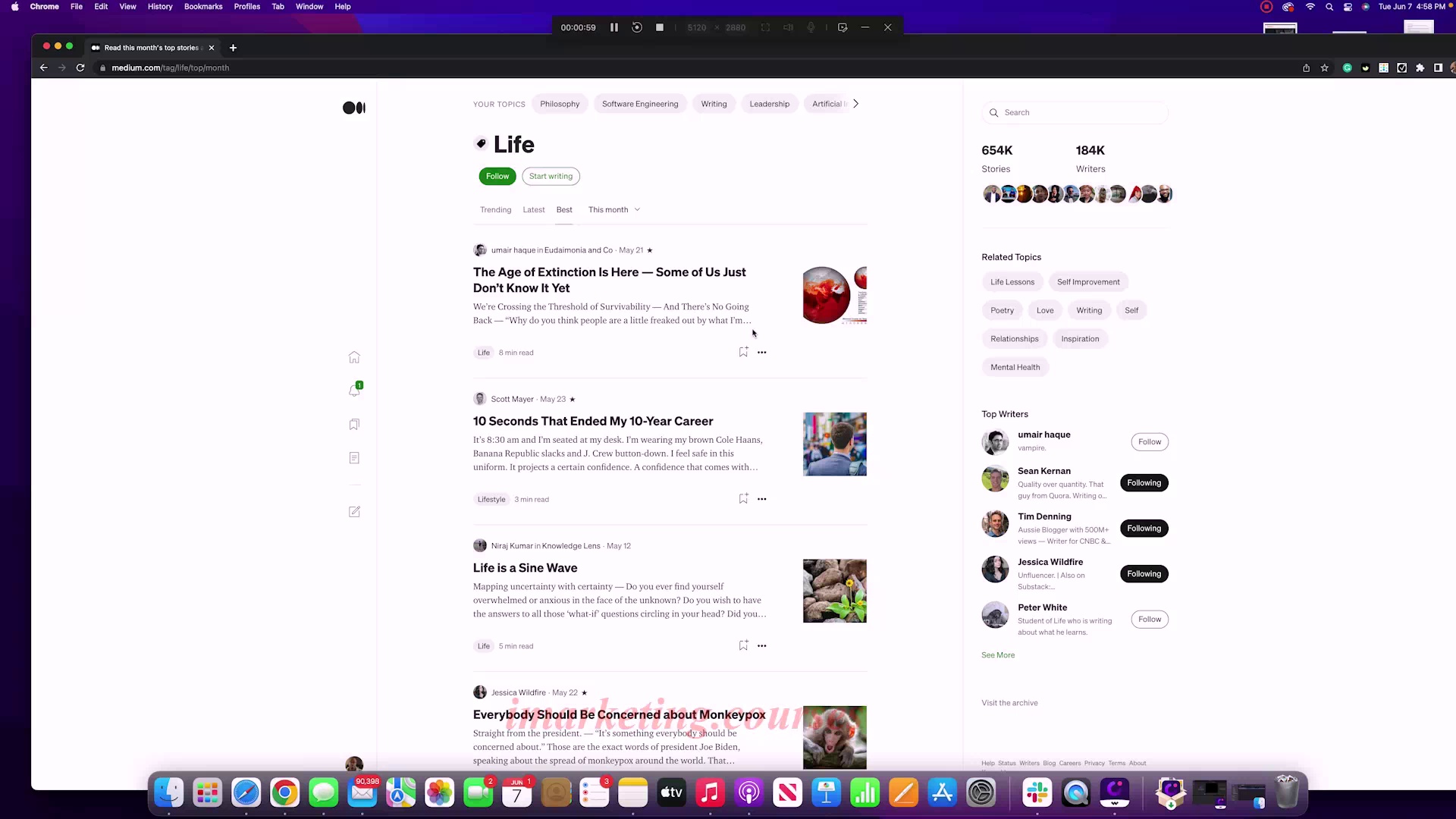
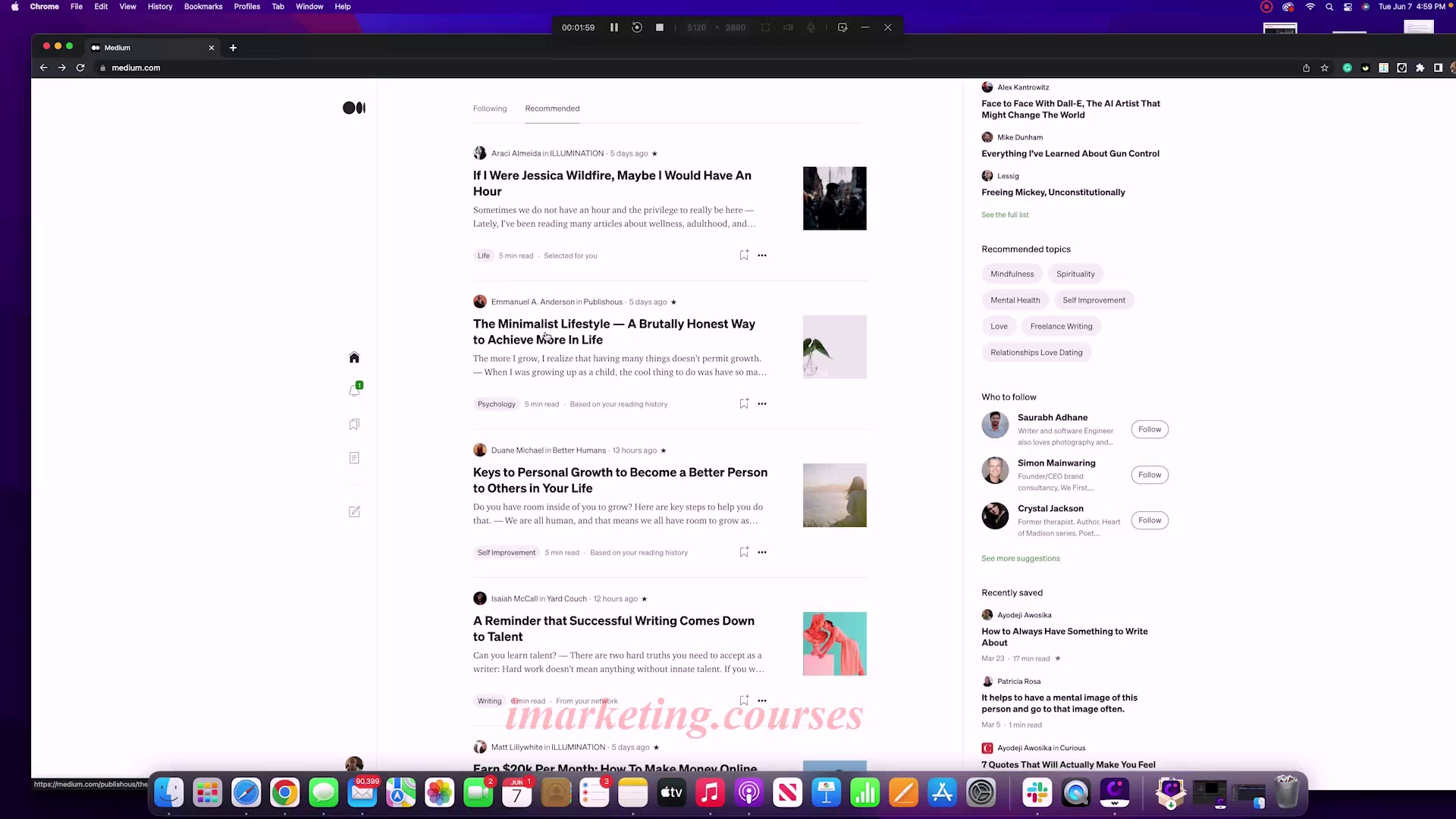
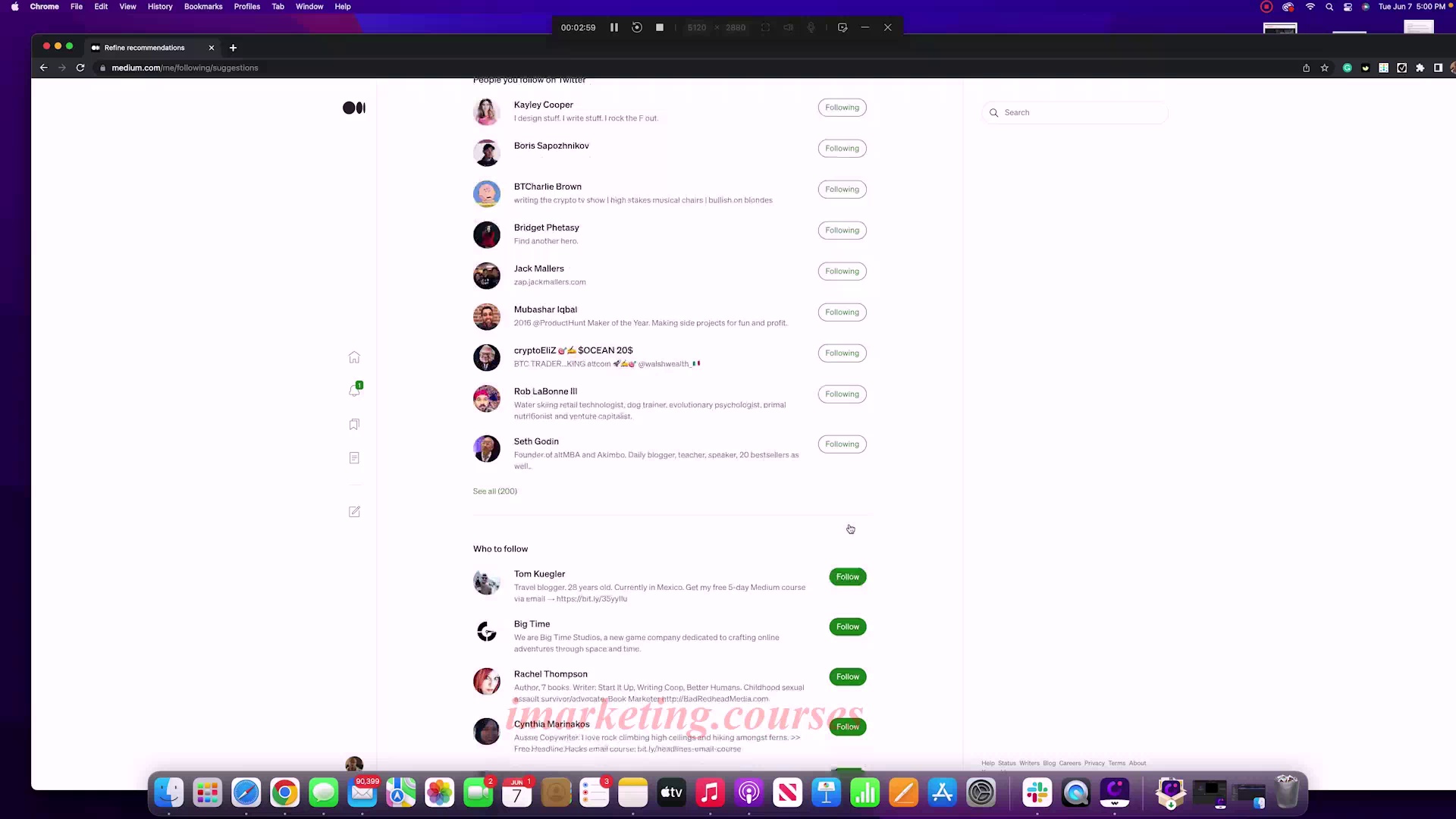

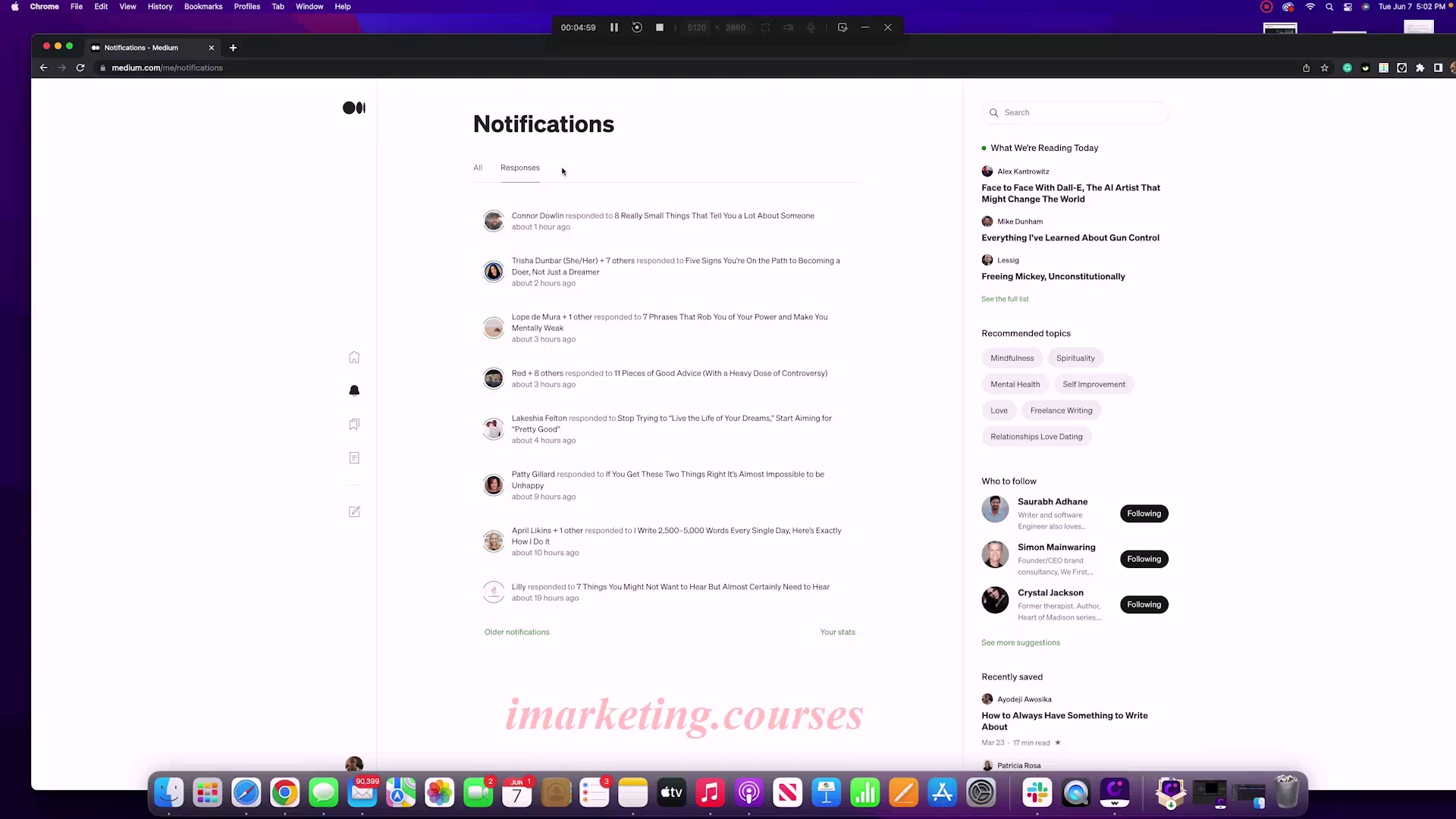
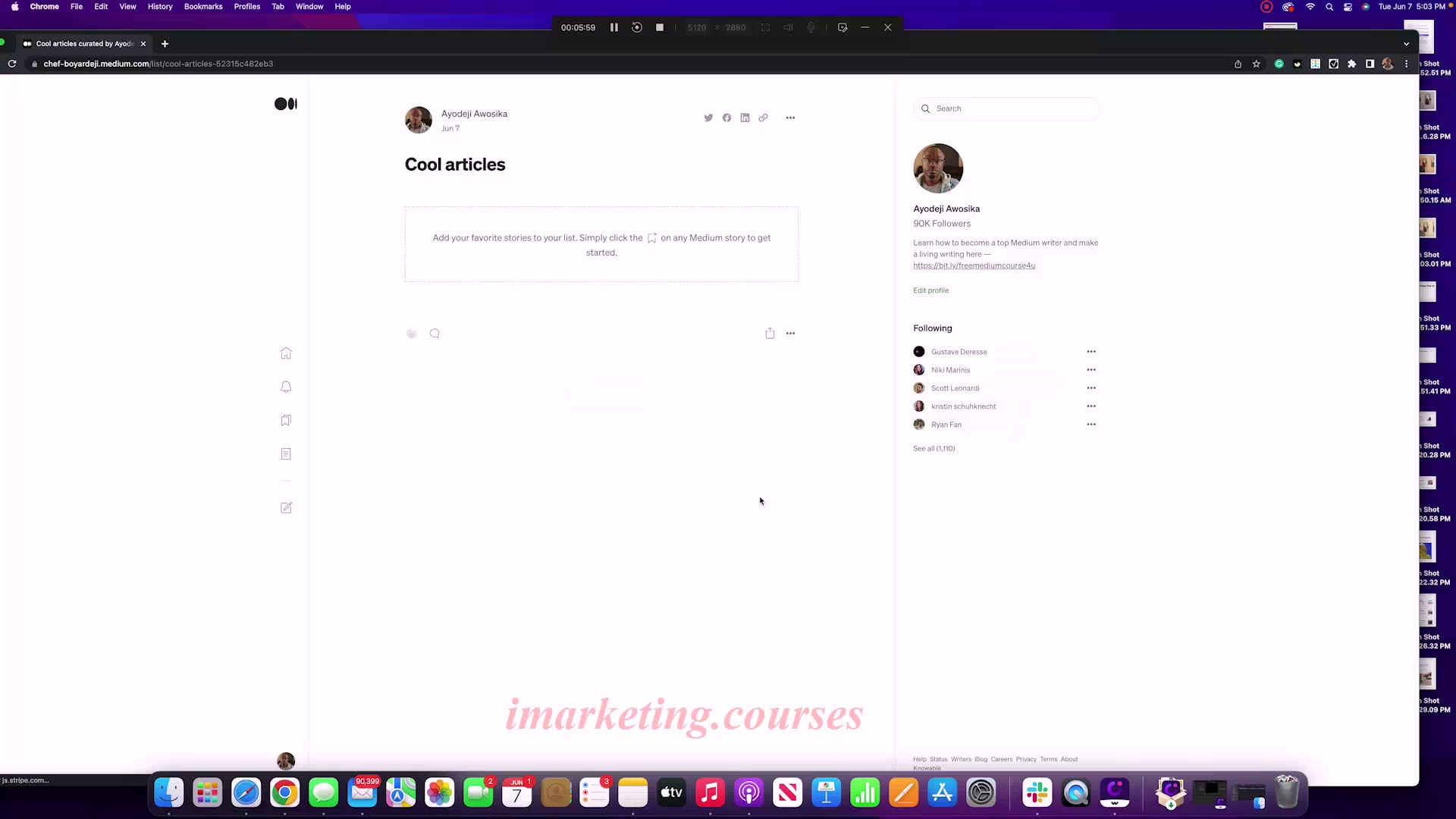
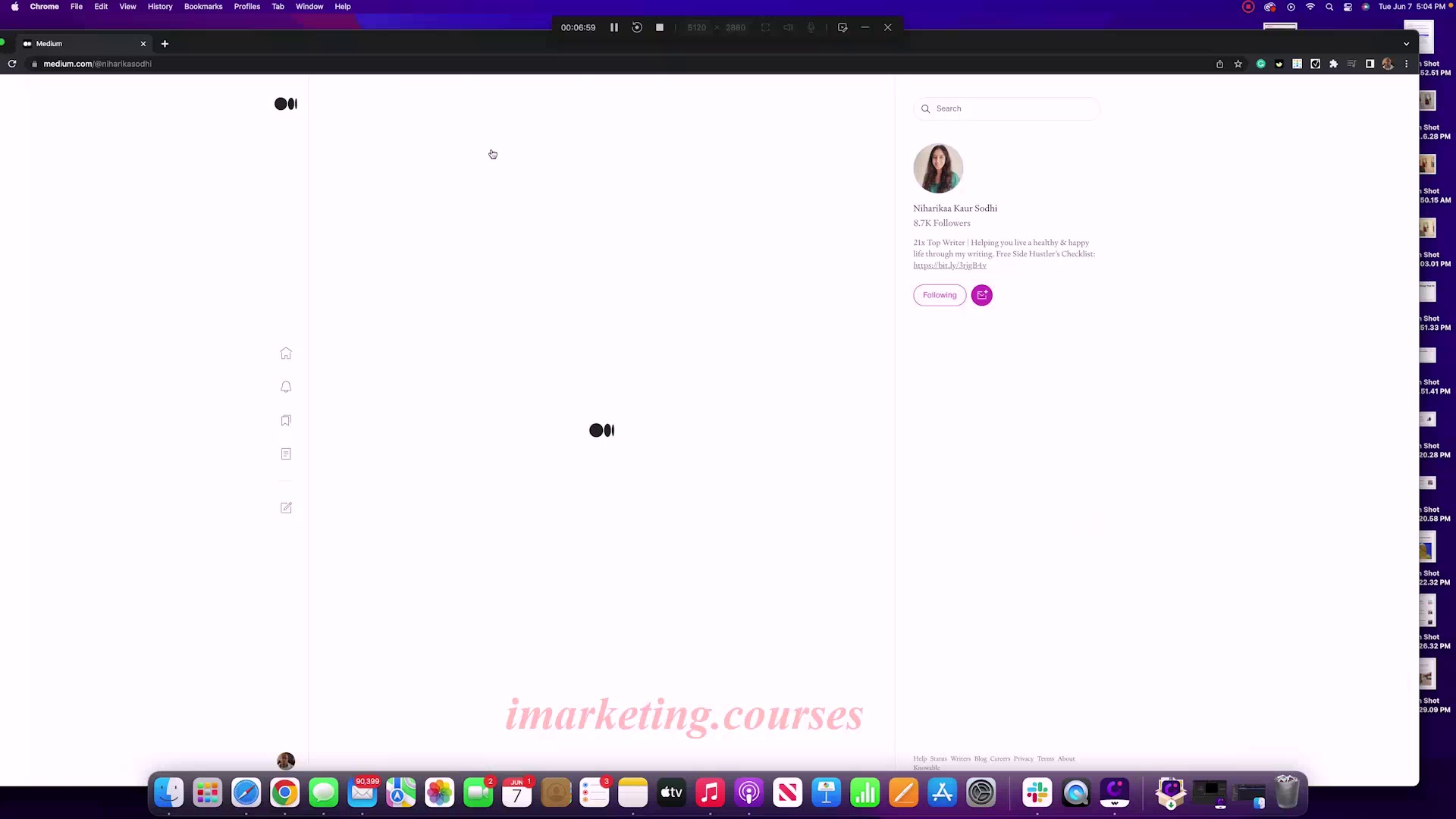
The narrator provides an overview of the Medium dashboard and key features, including the feed, publications, topics, analytics, and profile pages.
The feed shows recommended articles based on your selected topics and reading history. Publications are like mini magazines on Medium where articles can be published. Adding relevant tags to your articles allows them to surface in topic feeds and help you gain "top writer" status.
The narrator explains how to use metrics in the topics pages to analyze trending articles and headlines. He also advises reading top-performing articles in different topics to get ideas. Other tips include checking the related topics section for more article ideas and following top writers in your niche.
Notifications and responses allow you to interact with your audience. You can also highlight parts of articles you like and leave comments. Giving claps helps increase social proof for writers but does not directly generate income.
Profiles contain information about writers and serve as their homepage on Medium. The narrator demonstrates navigating to other users' profiles by clicking on their photo.
Overall, the dashboard provides data to help writers produce more engaging content, connect with the community, and track performance.
.Medium Writing - Part 5













































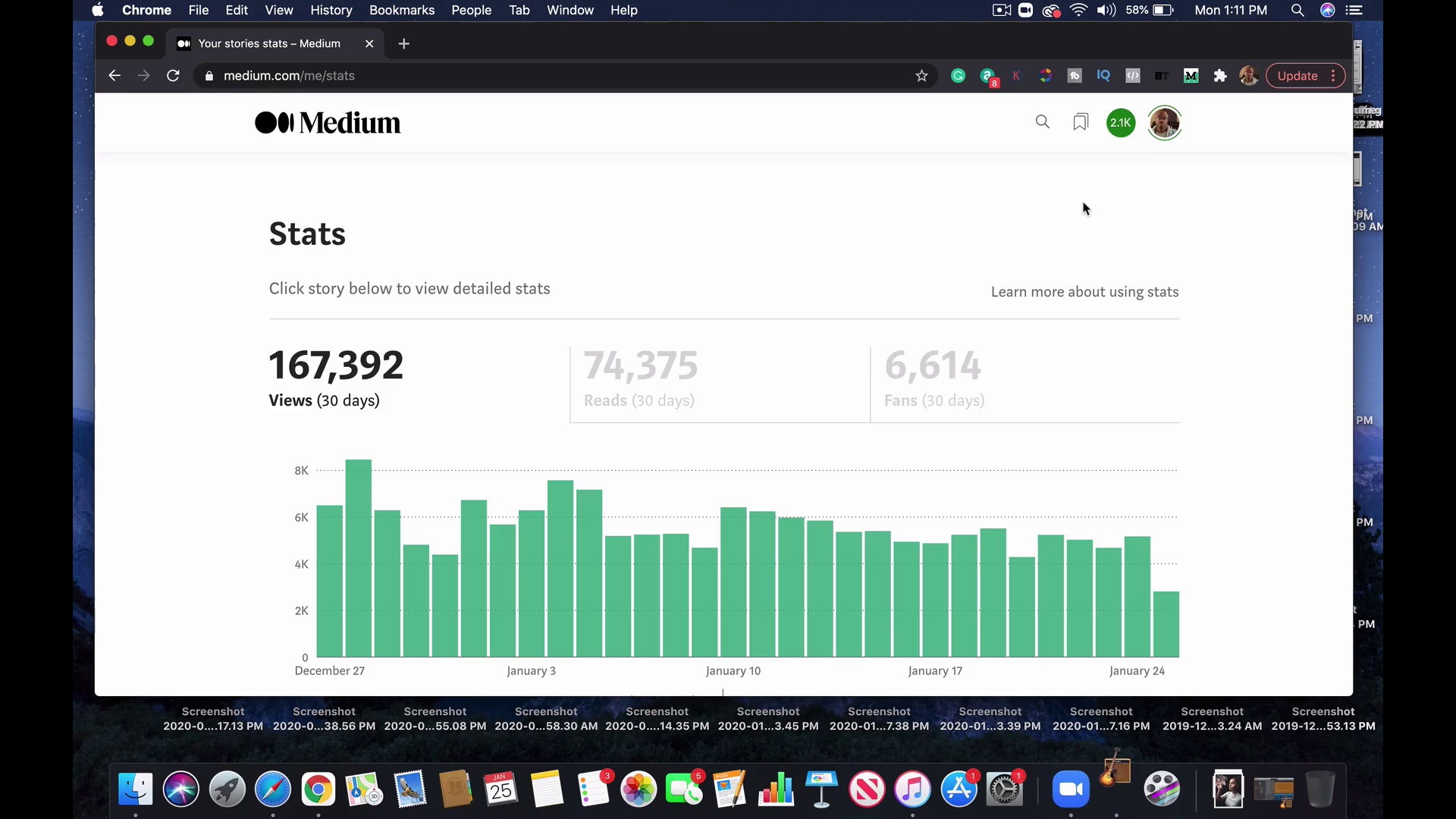
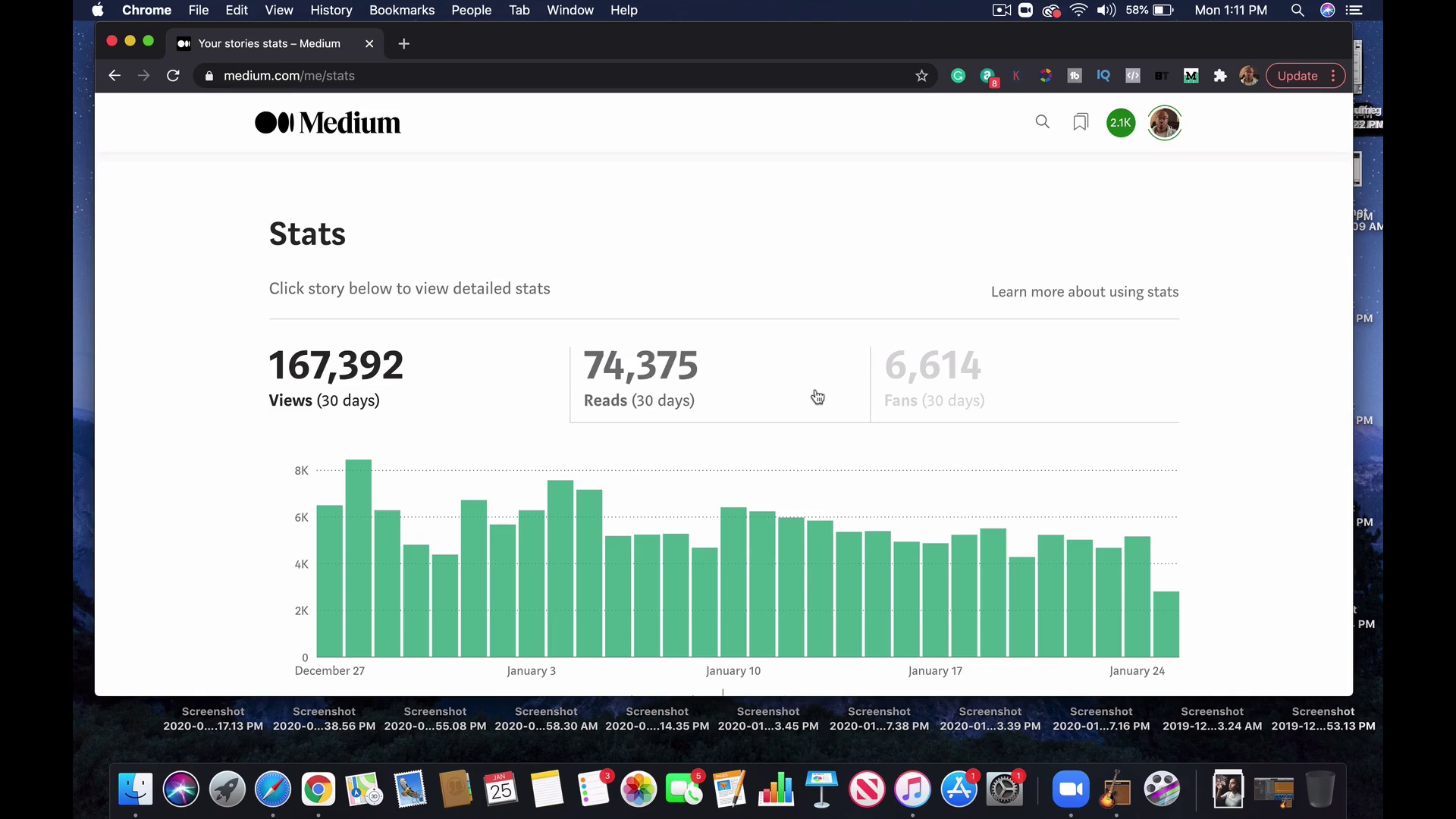
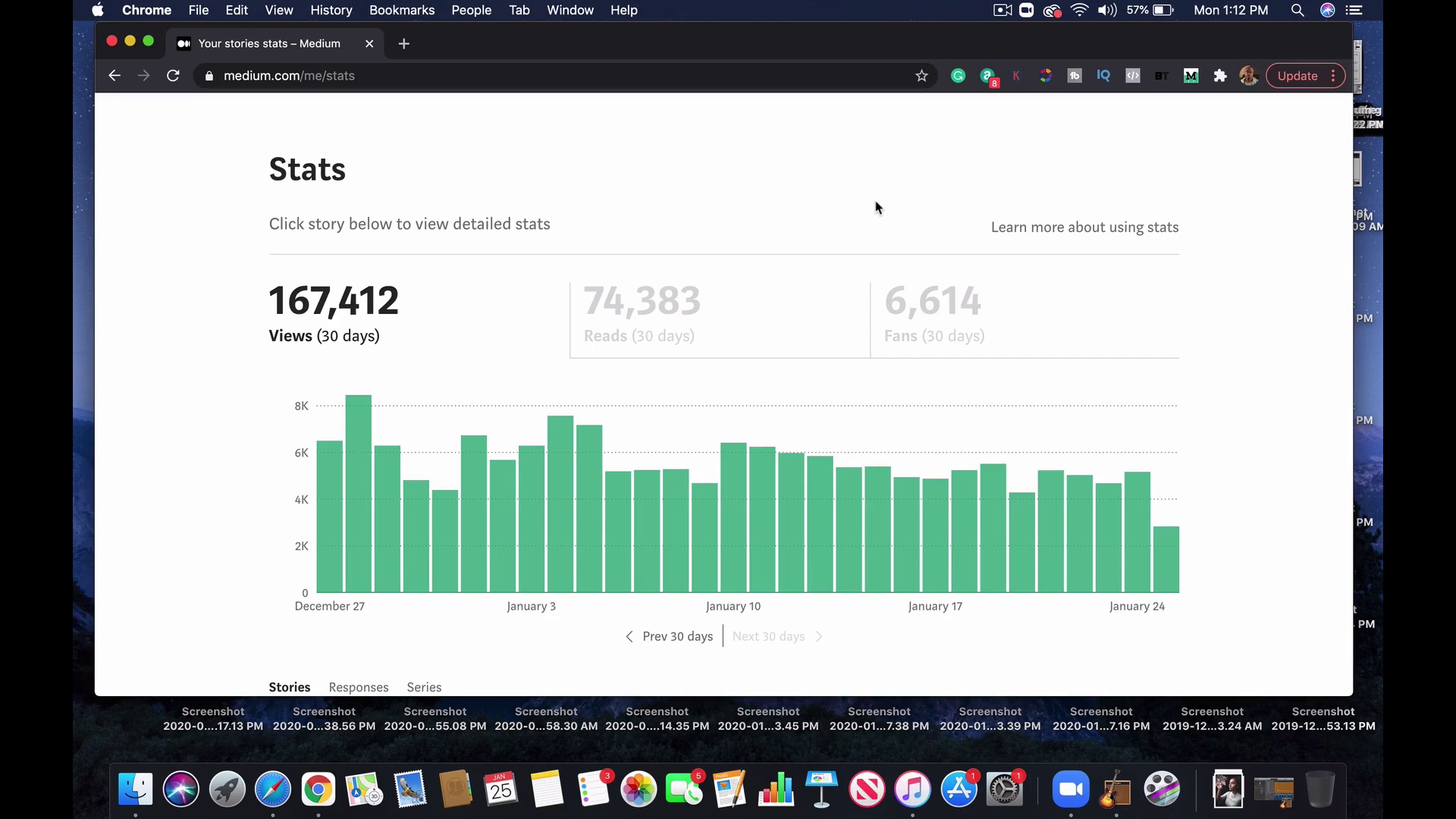
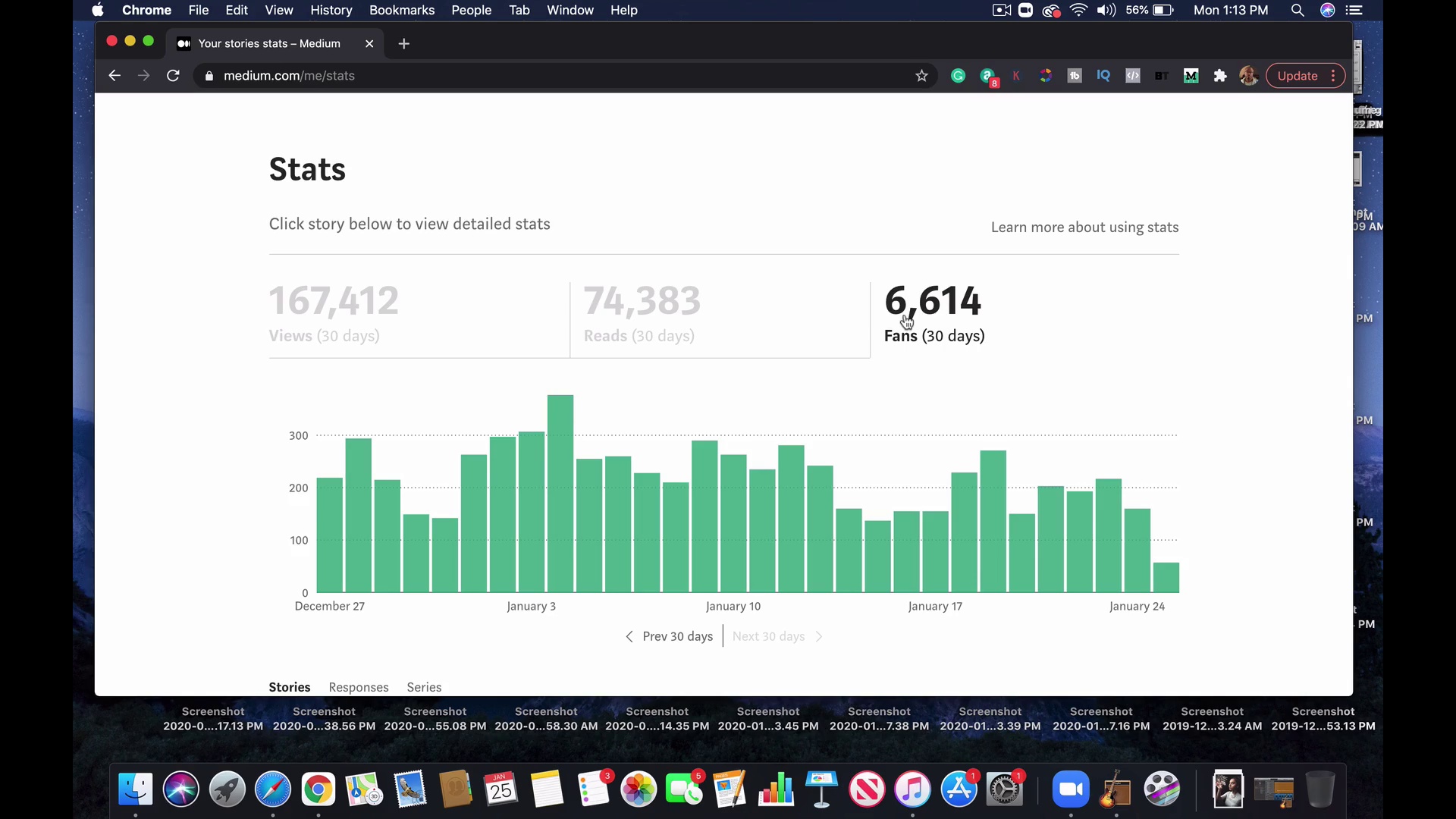
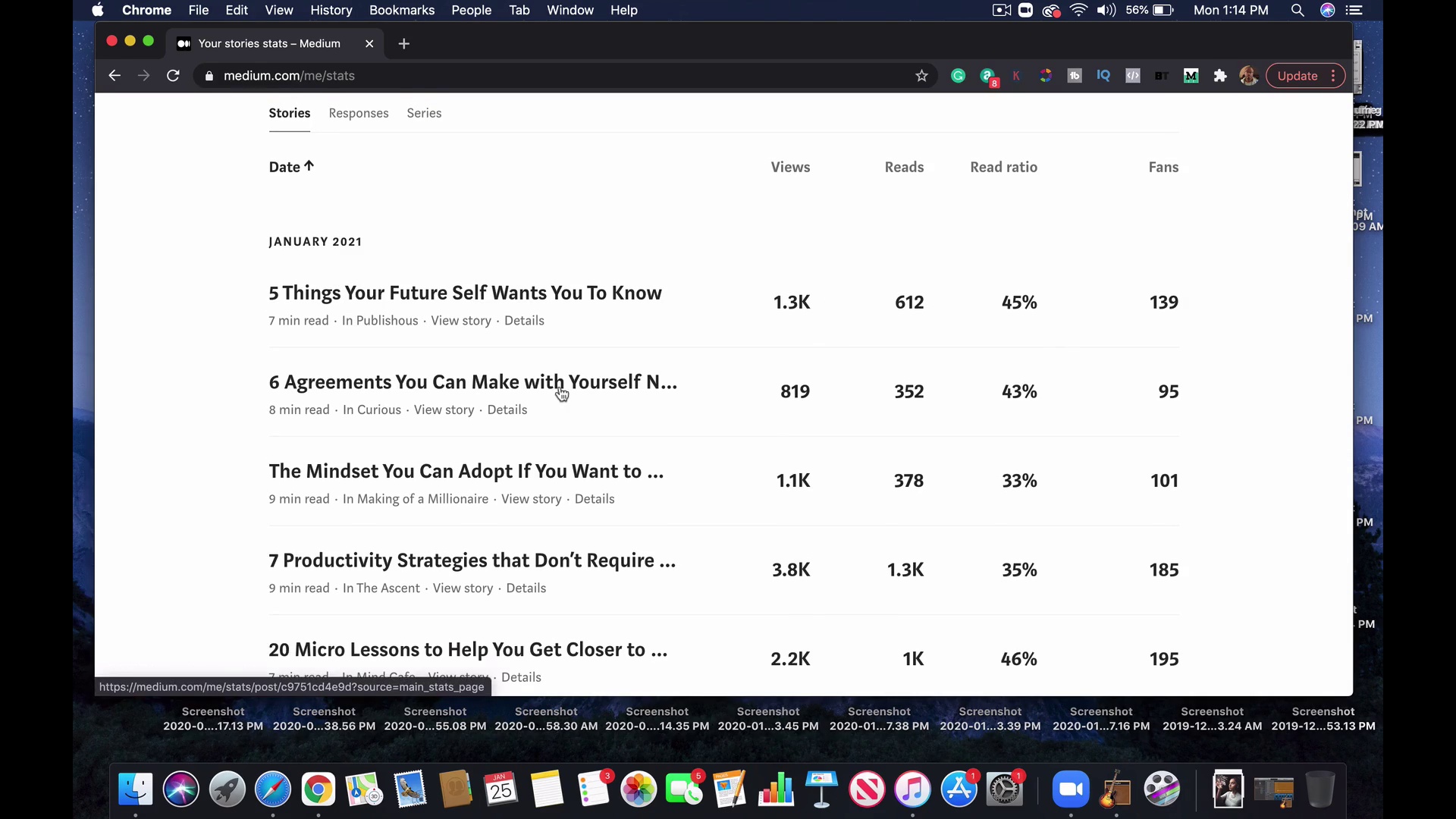
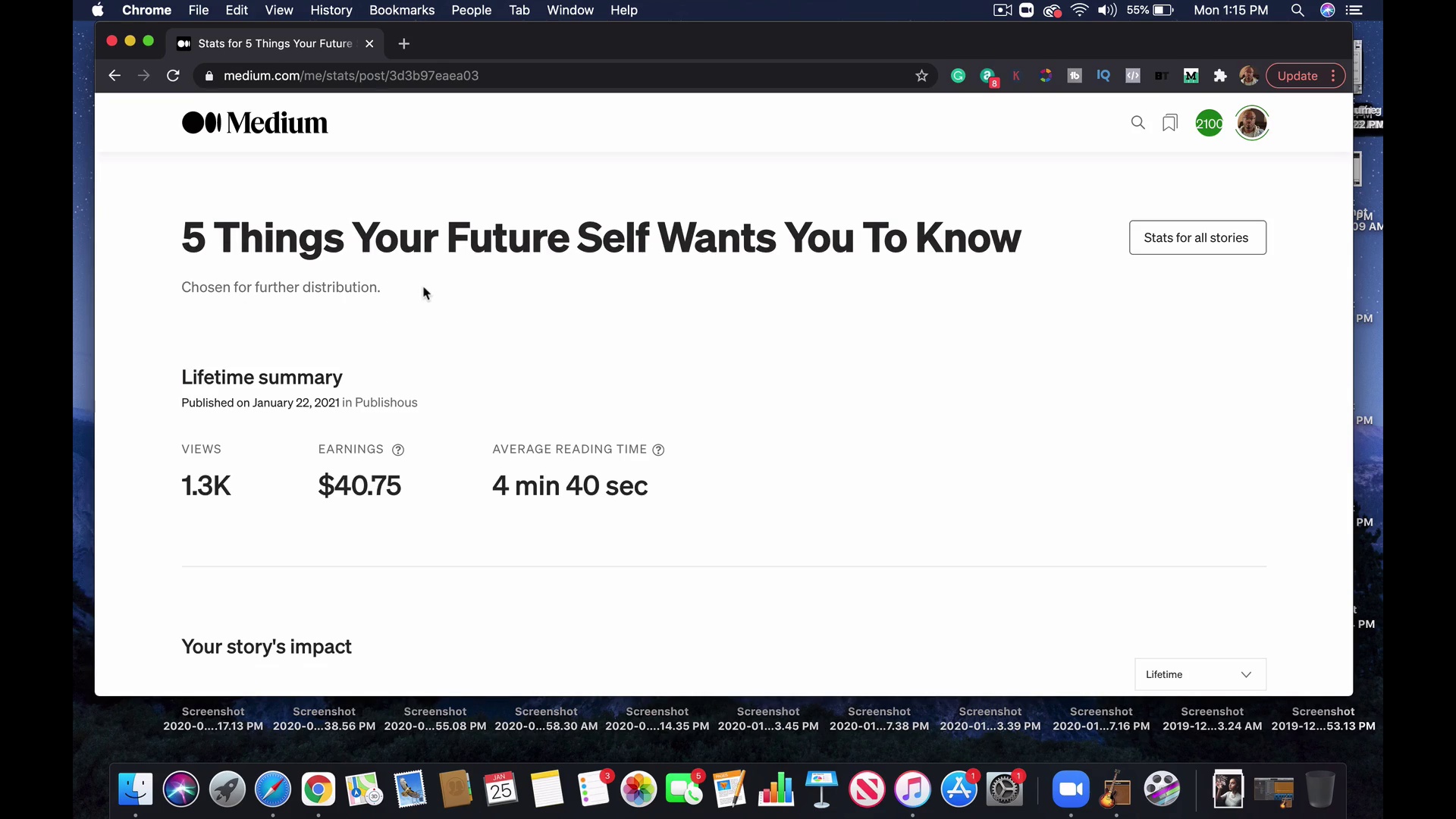
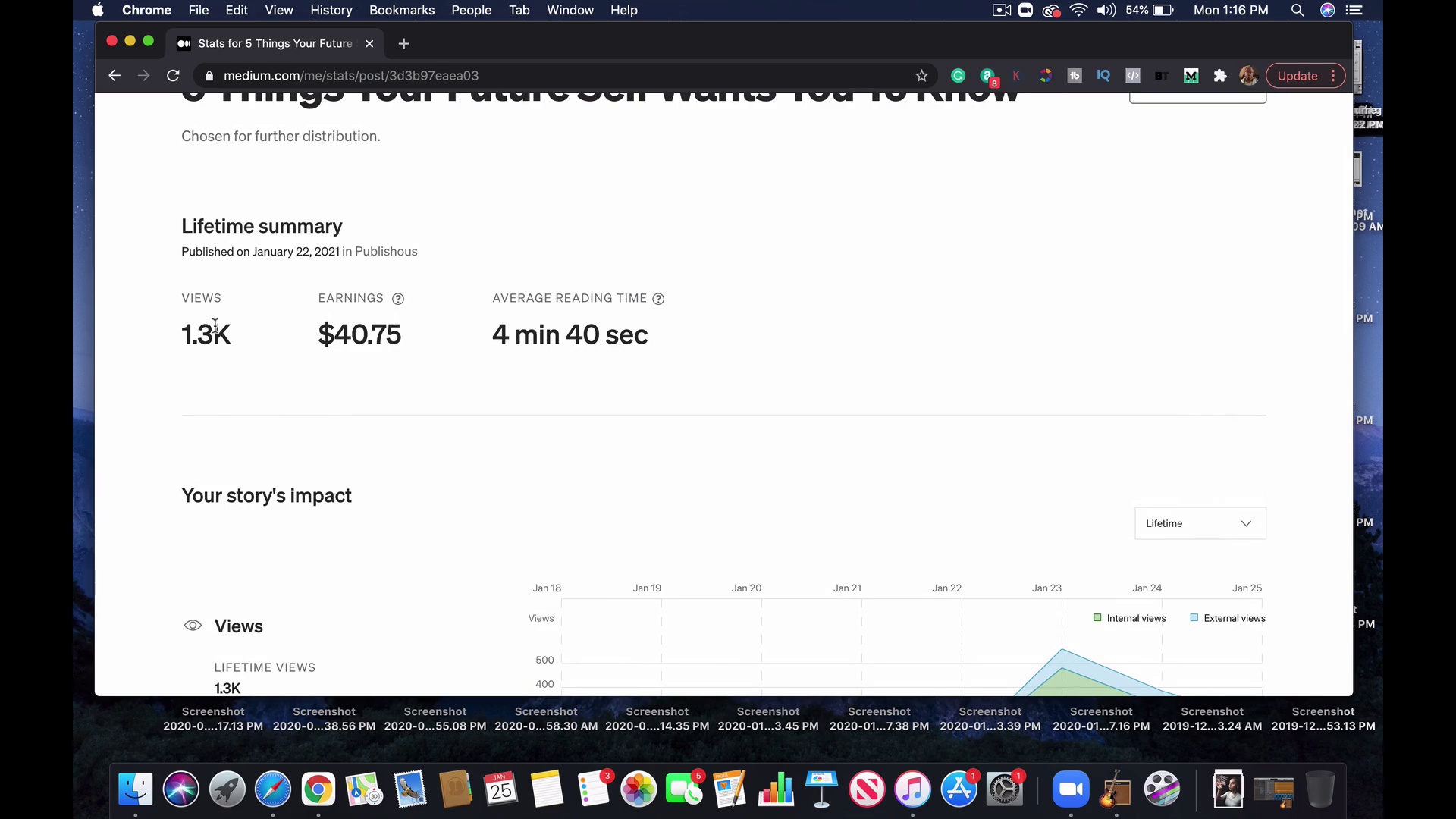
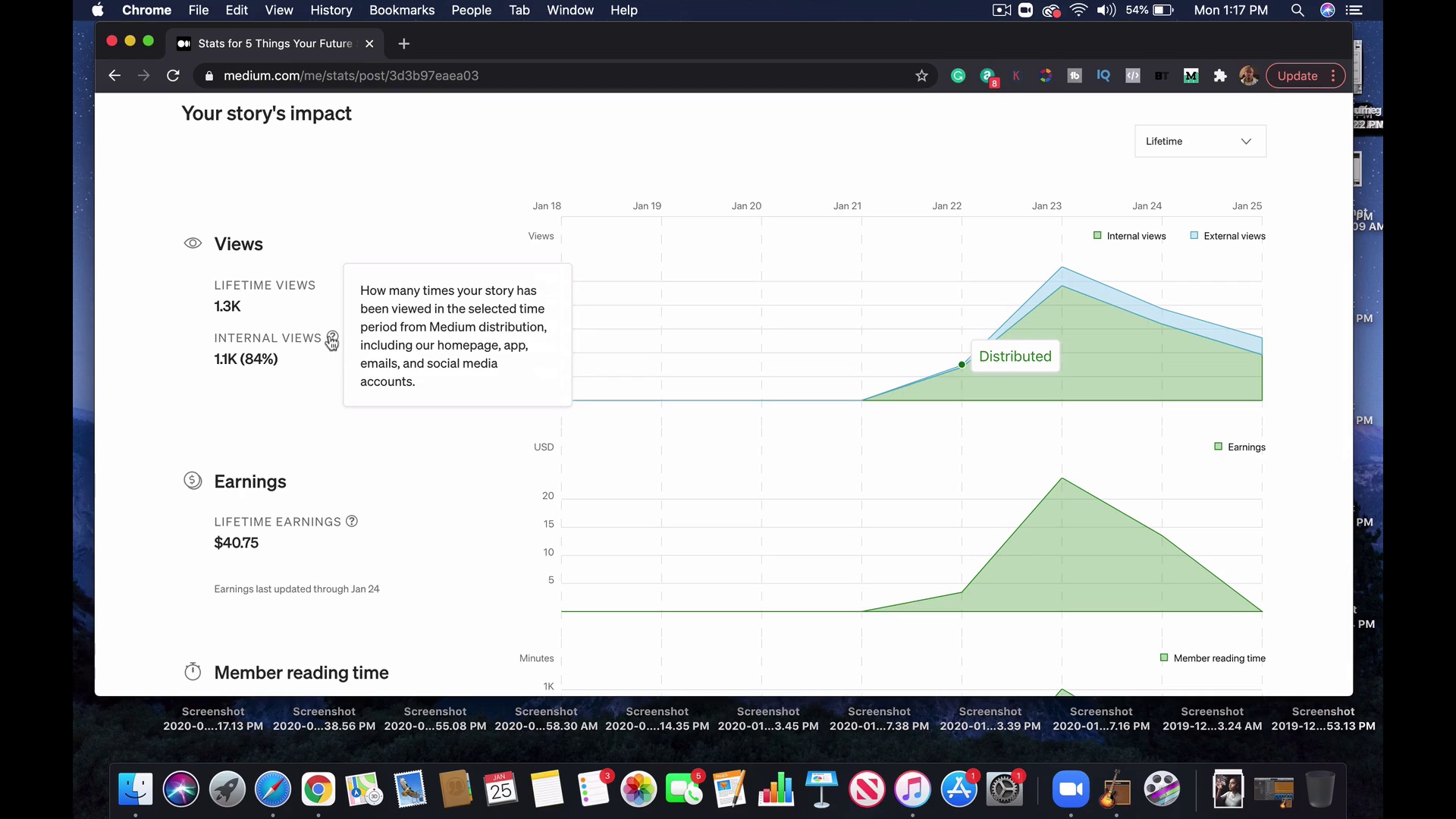
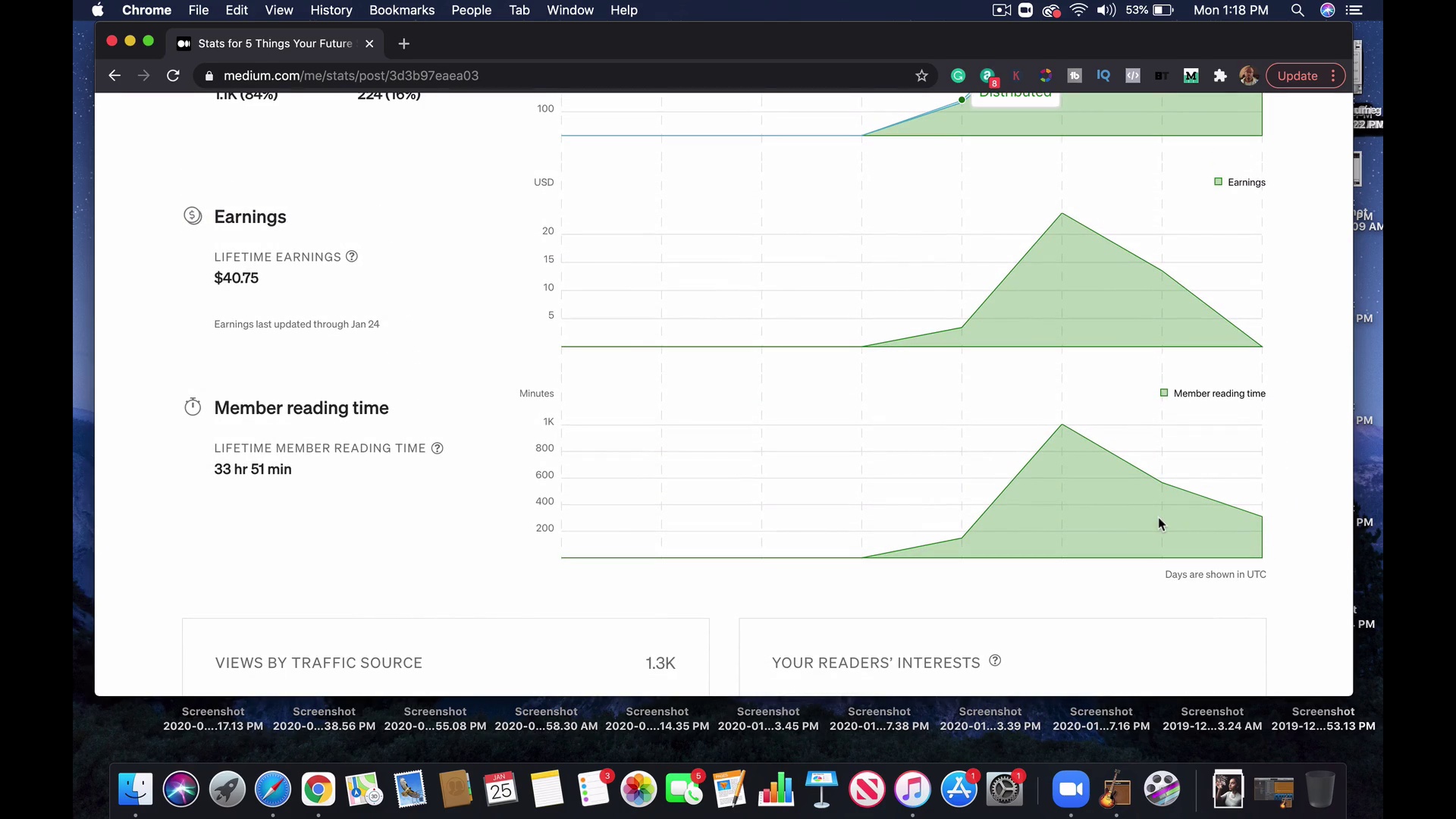
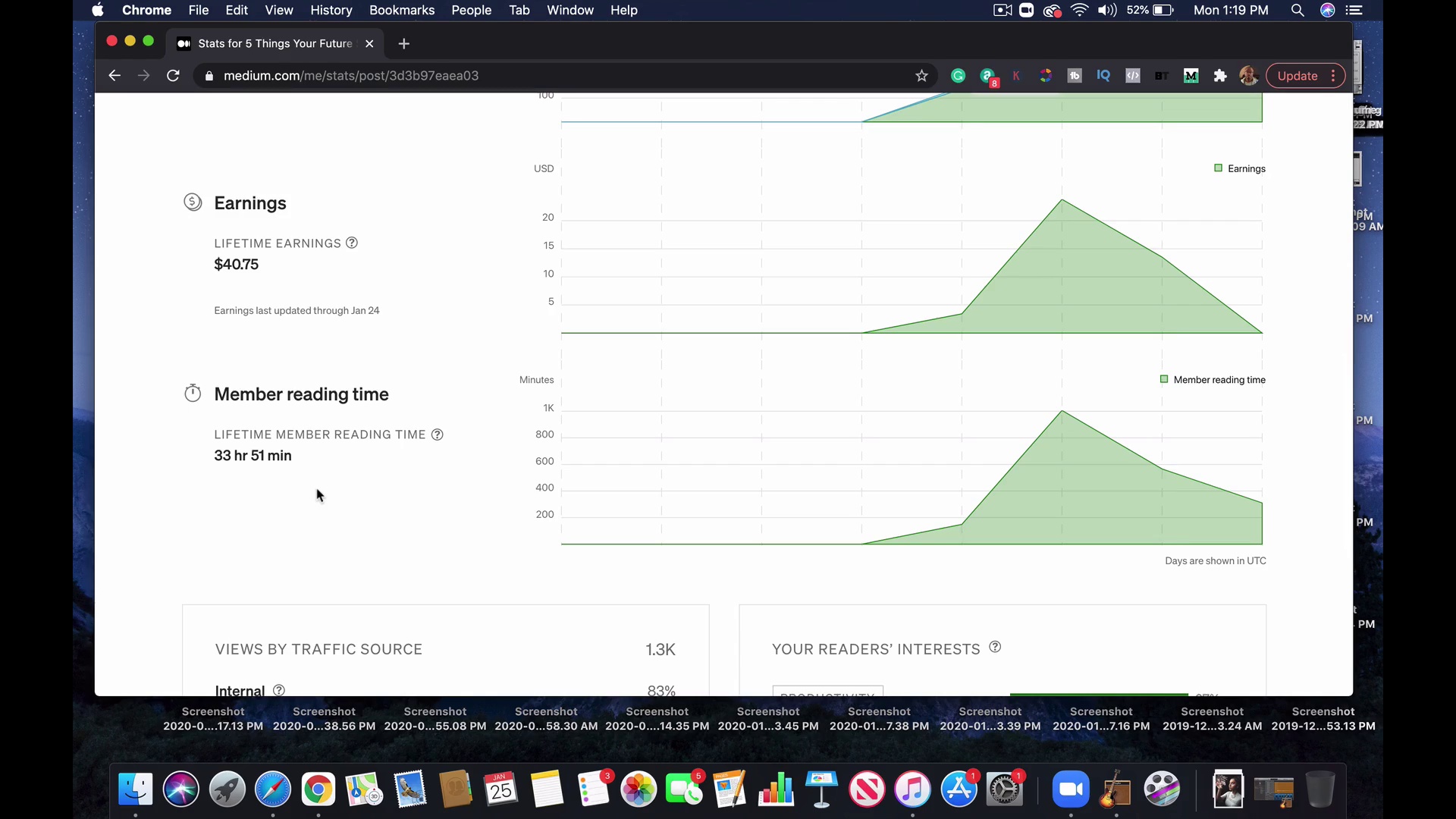
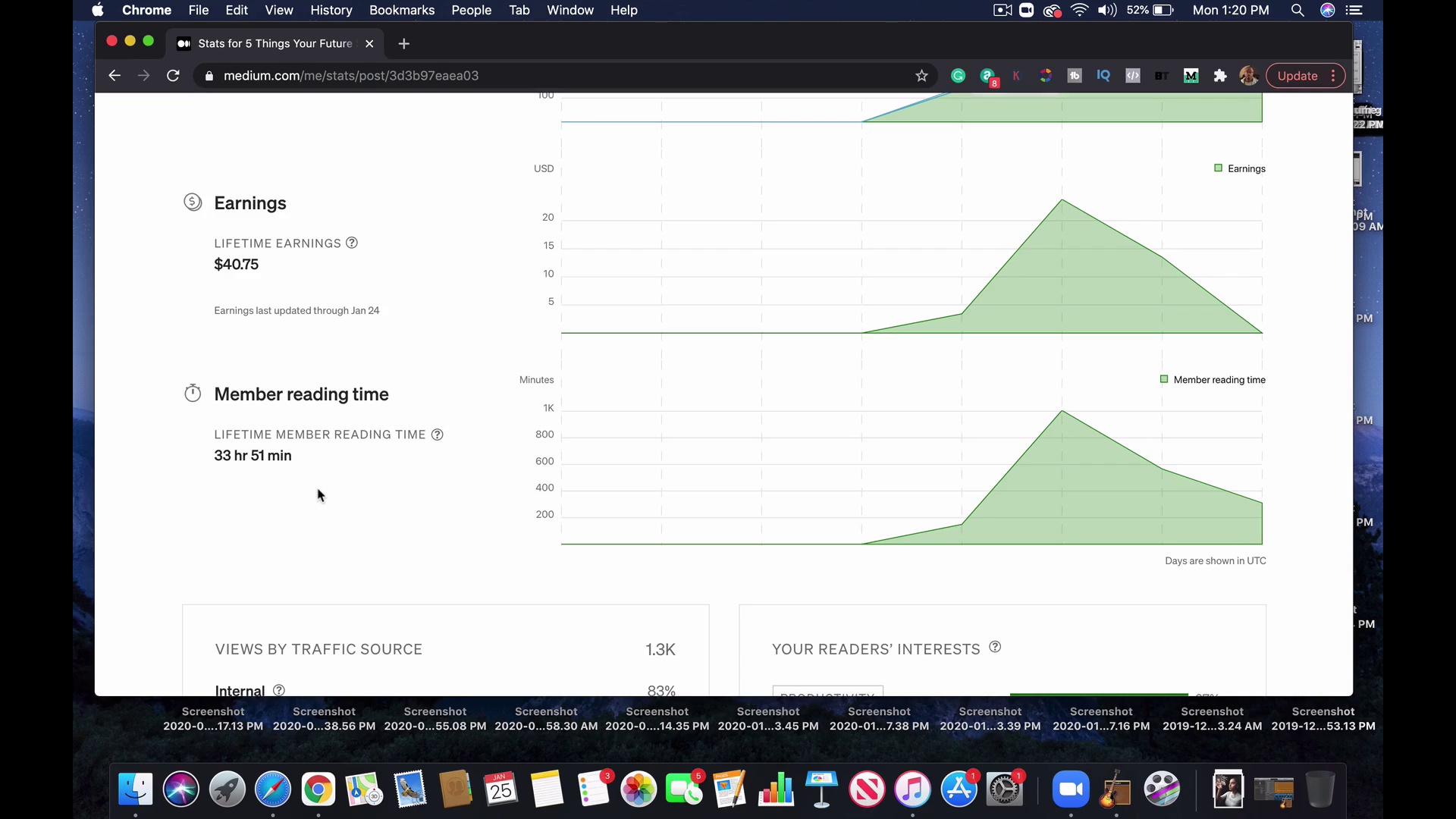
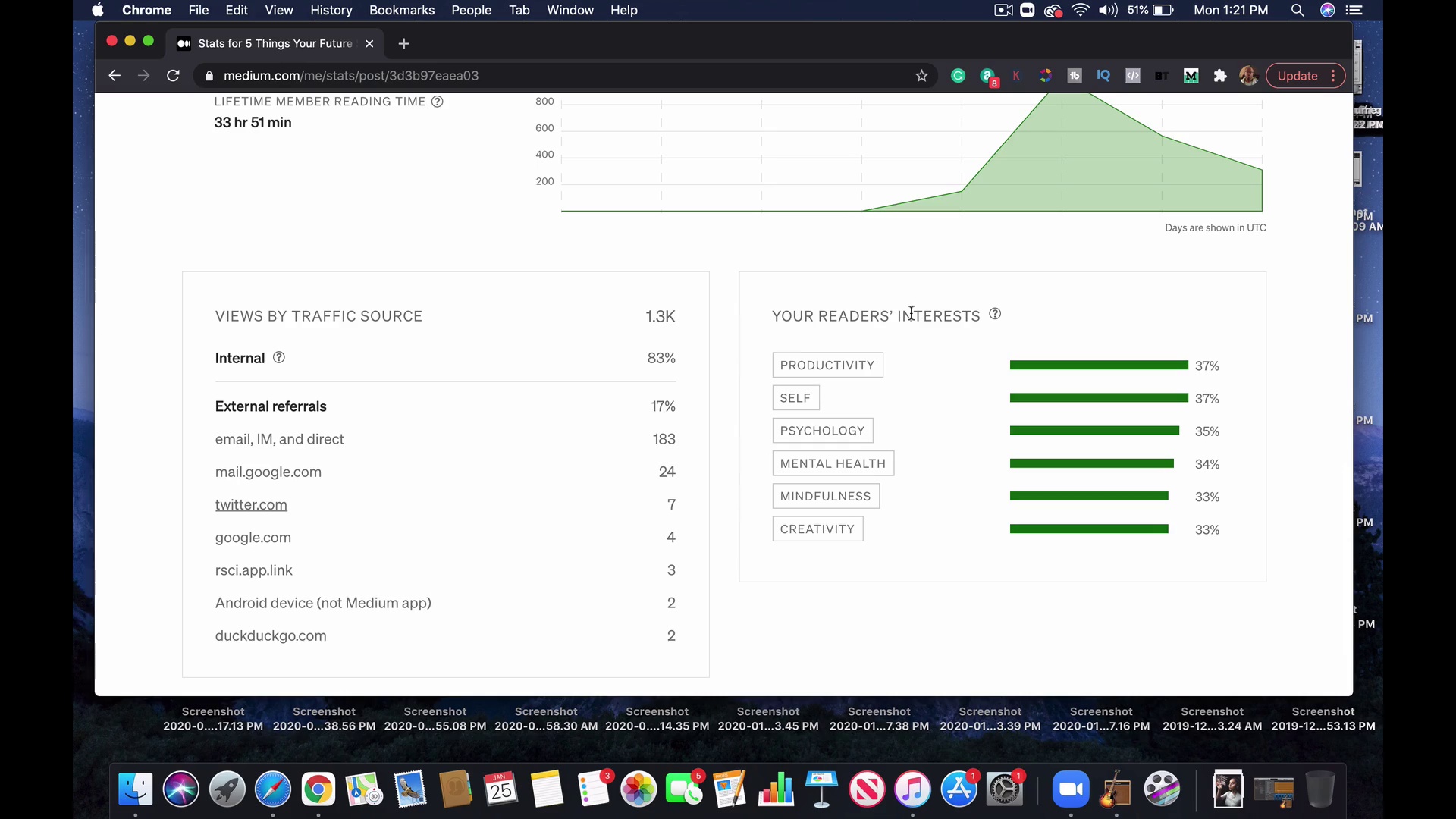
Stats Dashboard shows your metrics over a 30-day window. Check stats more often when starting out, then monthly later.
Views count when someone clicks your article. Reads count when someone finishes your article (more important for earnings).
Fans tracks people who "clap" your article. Read ratio shows percentage who finish your articles.
Click individual stories to see more details like curation status, which brings more traffic. Stories often get curated within 48 hours.
Average reading time shows engagement. 1-2 minutes is decent. Internal vs. external views - only internal (Medium members) count for earnings.
About $1 per hour of member reading time is a typical payout. Concentrated reads from loyal fans pay better.
Reader Interests shows who is reading and helps you tag properly. Friend links let non-members access your articles to build fans.
.